Choking Ourselves to Death
This catastrophic summer must open our eyes to the impending climate crisis. We have ways to slow it down.
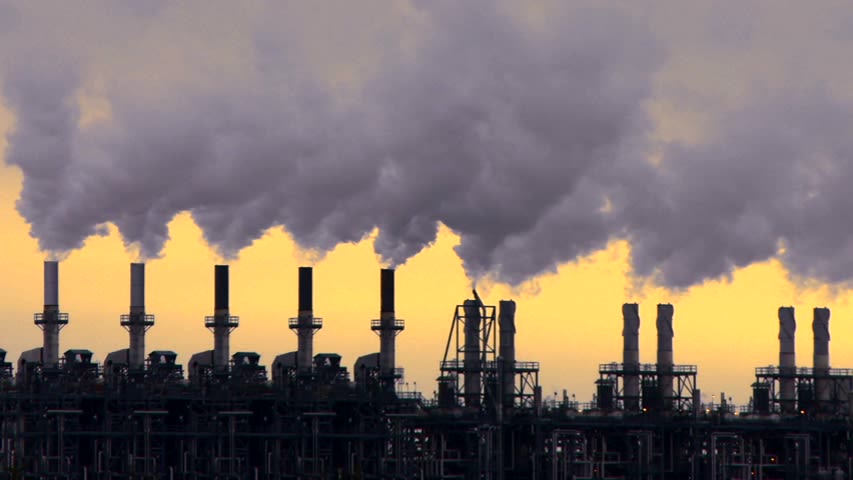
Editor's Note: Part one of this series was released on October 18.
Harsh heatwaves and immense wildfires once again stole the limelight of international media coverage this summer. As 2023 closes, it has already shattered weather-related records, leaving a path of devastation. This year, everyone faced the consequences of a sizzling world.
Data shows that this summer was the warmest by a wide margin. Between June and August, the average temperature was 62.2°F (16.8°C). The new record surpasses the runner-up, 2019, by 0.29°C.
July claimed the warmest month since 1880. Moreover, four days in a row, Earth documented its warmest day. July 7 was the hottest, reported at nearly 63°F.
Even though summer ended, the heat did not. In September, global temperatures soared past previous standards, leaving experts and scientists alike bewildered, to the point where one exclaimed it was "absolutely gobsmackingly bananas." Temperatures in September cleared the prior record in 2020 by 0.5°C. September became the fourth month in a row to exceed record heat.
That same month, the United Nations released yet another ominous report indicating that governments must take action immediately to evade breaching the 1.5°C goal set by the Paris Climate Accords in 2015. More alarming, temperatures in September have risen to 1.8°C since the Industrial Revolution, a clear warning that we may eclipse the accord's mission soon.
Evidently, this is a forewarning that 2023 will likely become the warmest year recorded in human history.
Unfortunately, the tone set at the SDG Summit during the United Nations General Assembly was somber. Only 15 percent of the 17 Sustainable Development Goals (SDGs) are on target, and several SDGs are regressing as we reach the halfway point of the 2030 Agenda.
United Nations Secretary-General António Guterres speaks to the crowd at the SDG Action Weekend ahead of the SDG Summit. Video courtesy of Evan Michaeli.
United Nations Secretary-General António Guterres speaks to the crowd at the SDG Action Weekend ahead of the SDG Summit. Video courtesy of Evan Michaeli.
Let me be clear: this summer's wrath was not a farce but a stark outlook for the future. We must wake up and quit pounding the snooze button on climate action.
Yet, it sounds like a broken record. We frequently hear of destruction from a climate dystopia. Officials pledge climate action, only to fail. In this scenario, we tend to neglect the positives.
We can't. We can't yield to negative thinking. We can't overlook a positive future.
Most importantly, we can't keep silent for our future.
But not through vandalizing or disrupting civilians. Protests targeting theater productions like the one at Les Misérables in London or barricading highways elicit fear and anger. Rather, through innovation, voice, and policy.
We must tout environmental victories. We must communicate solutions along with disasters and hold politicians and corporations accountable. We must harness the power of youth and the fearless attitude to cause change.
For the next three weeks, diplomats meet in Dubai for COP28. COP28 will be a critical test for the ambitious goals to mitigate warming to a manageable temperature. Leaders need to step up to the plate and negotiate, for my future and the planet's.
Heat
Unleashing fury upon Earth.
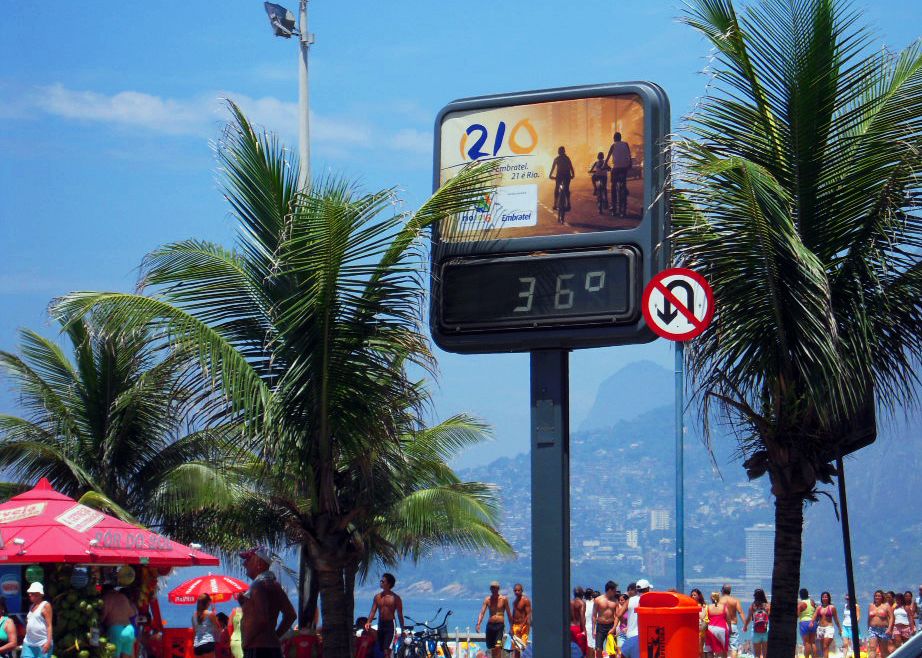
Southwest
Are we sure the American Southwest isn't an outdoor sauna?
The Southwest region experienced severe heat all summer long and received zero relief. Residents in Phoenix witnessed a streak of 31 consecutive days above 110°F, and College Station in Texas saw 50 straight days of 100°F heat.
Even going outside for a walk wasn't without danger. Falling or sitting on the pavement may result in a third-degree burn, as the pavement in desert metropolises could reach 170°F on a hot day.
A Las Vegas doctor told The Washington Post that a third of the burn victims in his unit came from pavement burns.
China
China confronted a tremendous heatwave in July, as temperatures topped 126°F (52.2°C) in a small village in the northwest region. Beijing logged at least 11 days over 104°F (40°C) and documented a high of 106°F on June 22, a record for the month.
On July 10, according to CNN, China documented a daily record of 4.09 billion kilowatt-hours (kWh) of electricity production, transcending the previous record by 40 million kWh.
Mediterranean
The Mediterranean region sweltered through an extraordinary summer of heat. Life for locals, along with tourist schedules, altered significantly.
High temperatures and scarce rain in Catalonia left reservoirs at 30 percent capacity. French harvestworkers and construction workers began their days before dawn to avoid the warmth. Tourists visiting Italy in August were urged to stay indoors to escape the insufferable heat as Italian authorities raised heat alerts in 16 cities, including Rome and Milan. Greek tourist attractions limited hours to compensate for the heatwave.
Because European cities are normally temperate, the absence of air conditioning exacerbated the heatwaves and caused a greater chance of heat stress.
India
In June, India scrambled in panic as a tremendous heatwave swept the country, killing almost 170 people in June.
At times, the stench of death became unavoidable.
"So many people are dying from the heat that we are not getting a minute’s time to rest. On Sunday, I carried 26 dead bodies," Jitendra Kumar Yadav, a hearse driver in the northern state of Uttar Pradesh, told the Associated Press.
Hospitals returned to pandemonium akin to the height of the COVID-19 pandemic. The largest hospital in Ballia district could not house more heat victims and the morgue was at full capacity as 54 senior citizens occupied the morgue.
Even if patients could find a place inside the hospital, a refuge from the heat wasn't guaranteed. Al Jazeera reported that medical staff fanned patients with books and dabbled their sweat on them, hoping to keep sufferers cool.
Chile
August is typically the coldest time for Chile and neighboring South American countries. This year, the region boiled through a historic heatwave.
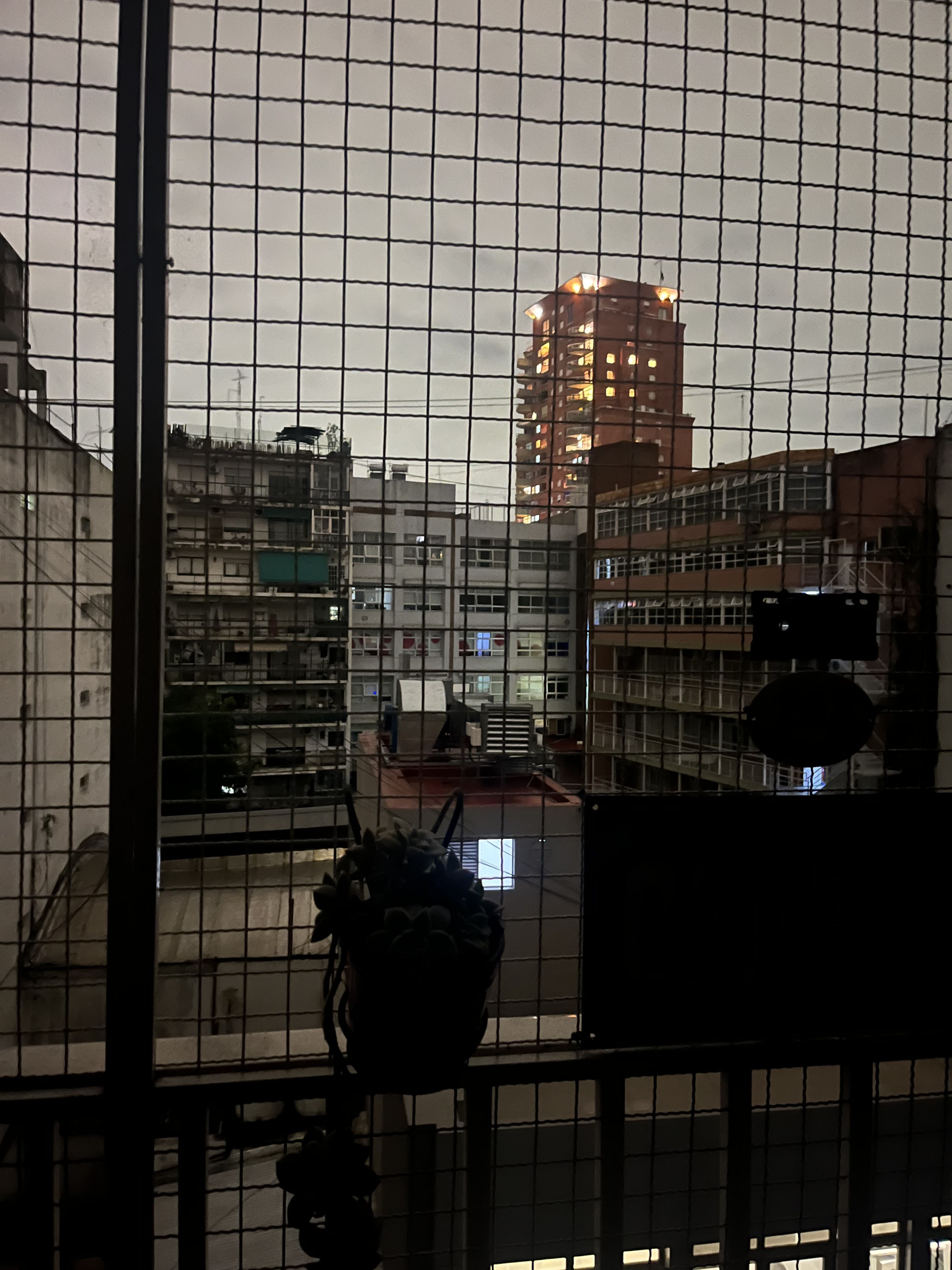
Thunderstorm in Buenos Aires during the winter. Photo courtesy of Evan Michaeli.
Thunderstorm in Buenos Aires during the winter. Photo courtesy of Evan Michaeli.
During a summer exchange program in Argentina, I remember locals telling me that the weather was well above-average, as temperatures spiked to 72°F in Buenos Aires on July 4.
Chile and Argentina saw temperatures soar to triple digits, highly unusual for that time of year. In some areas, the highs were more than 20°C (68°F) above average. That is a drastic shift. According to CNN, Buenos Aires, the capital of Argentina, sees an average of 64°F in winter. On August 1, the high topped at 86°F.
The heat wave even triggered snow melt throughout the Andes mountain range, which caused concern for homeowners regarding floods. Such high temperatures during the winter months should spark concern for our future winters.
South America also experienced a record-breaking heatwave in February, stoking the flames of deadly wildfires in Chile and wilting Argentinian crops and spirits of locals and residents alike.
You know, heat kills.
According to NOAA, extreme heat is the deadliest weather-related event in America. In fact, heat claimed more American lives than lightning and tornadoes combined on average in the last decade.
Alas, FEMA cannot offer assistance for heat-stricken regions because heatwaves are not specifically cited in the Stafford Act, the law that dictates FEMA's response to natural catastrophes.
Only one word describes the ineptitude of Congress, failing to pass legislation amending the Stafford Act: unacceptable. Unacceptable for the overworked hospital staff and infrastructure negligence. We must rethink aid for disasters, not just property, but also for living creatures. Congress cannot deny the health consequences of heatwaves any longer.
It is clear that global warming is a driving factor in heat waves. One study published by World Weather Attribution found that without human-caused climate change, extreme heat events would be rare in China and almost impossible in the United States and Southern Europe. Due to global warming, these severe heat events could occur every five to 15 years.
Climate Central, a climate research center, discovered climate change made the harsh heatwaves this summer twice as likely.
“In every country we could analyze, including the Southern Hemisphere where this is the coolest time of year, we saw temperatures that would be difficult—and in some cases nearly impossible—without human-caused climate change,” Vice President of Science for Climate Central and the study's lead author Andrew Pershing said.
In 2021, the Intergovernmental Panel on Climate Change (IPCC) determined some of the factors of the unprecedented heat to be increased aerosol use and urbanization.
However, World Weather Attribution mentioned that "the burning of fossil fuels is the main reason the heatwaves are so severe."
When heatwaves ensue, we simply turn on our air conditioners. That action alone increases reliance on fossil fuels. The Department of Energy says that six percent of electricity is produced in the United States and discharges 117 million metric tons of carbon dioxide annually.
Of course, this causes a chain reaction.
“One of the things that air conditioning has done is it has made more parts of the world habitable, but it has also added to global warming, which then makes other parts not so habitable," AP Environmental Science Teacher Cecilla Pan said.
Furthermore, the IPCC deemed it "virtually certain" that powerful and frequent heatwaves will continue.
While climate change has its role in fatal heatwaves, it is crucial to mention the link between the harsh heat and the natural phenomena of El Niño.
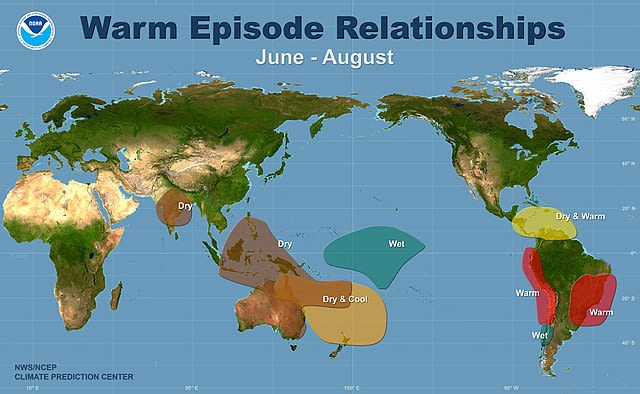
El Niño impacts globally during the Northern Hemisphere summer months. Photo courtesy of Wikimedia Commons and NOAA.
El Niño impacts globally during the Northern Hemisphere summer months. Photo courtesy of Wikimedia Commons and NOAA.
During El Niño, warmer waters off the Pacific coast of South America induce warmer summer temperatures. However, El Niño usually signals intense flooding for the Gulf Coast and Southeast.
Social Consequences
Unfortunately, heat comes with some mighty social consequences.
First, with a rise in metropolises, protection against the heat is segregated. Poorer neighborhoods in cities are likely to be "urban heat islands." Urban heat islands are a direct consequence of urbanization.
Surfaces like roads and buildings absorb more heat than natural vegetation, and tall buildings create an "urban canyon effect," which traps heat between buildings.
Analyses show that heat islands can cause temperatures to increase from 1°F to 7°F during the day and 2°F to 5°F at night. Thickly vegetated areas in a city may see temperatures up to 20°F cooler than their heat island counterparts.
Sadly, according to the EPA, current heat islands and past redlined zones have a noticeable link. Investigations in three U.S. cities–Baltimore, Dallas, and Kansas City–revealed that historically redlined communities had less vegetation and high temperatures.
Likewise, the EPA pointed to another study that examined 500 U.S. metropolitan neighborhoods. The study concluded heat islands were more intense in lower-income and Black populations.
In addition, a study conducted by JAMA Psychiatry related a rise in temperatures by 1°C to domestic violence in Pakistan and India. The research tracked more than 190,000 girls and saw an 8 percent rise in physical violence and a 7.3 percent increase in sexual violence.
A woman in India told The Guardian that the intense heat made it hard for her husband to work in the fields, thus losing their sole source of income.
“He becomes angry because he feels helpless about not being able to feed the children,” the woman said. “When the frustration builds up and the children are whining and fighting, he takes it out on me. He also beats them too. He regrets hitting the children later but the next day when he still can’t go out and earn, he does it again.”
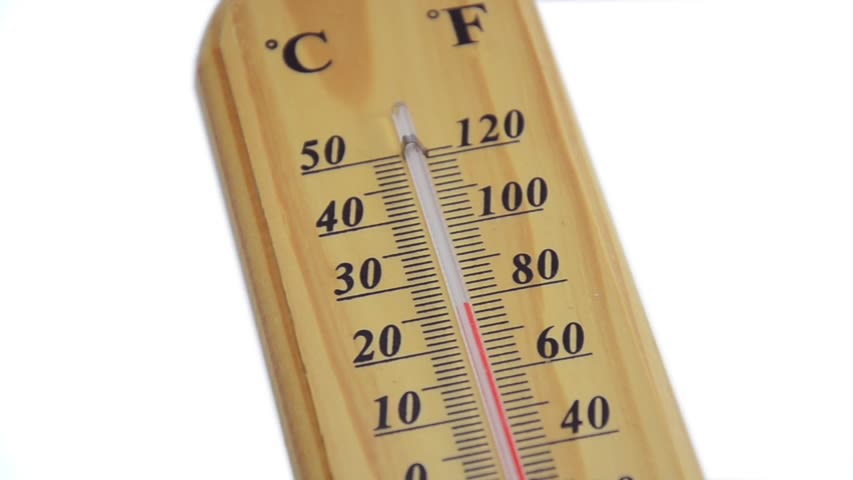
Wildfires
Burning down our house.

Hotspots
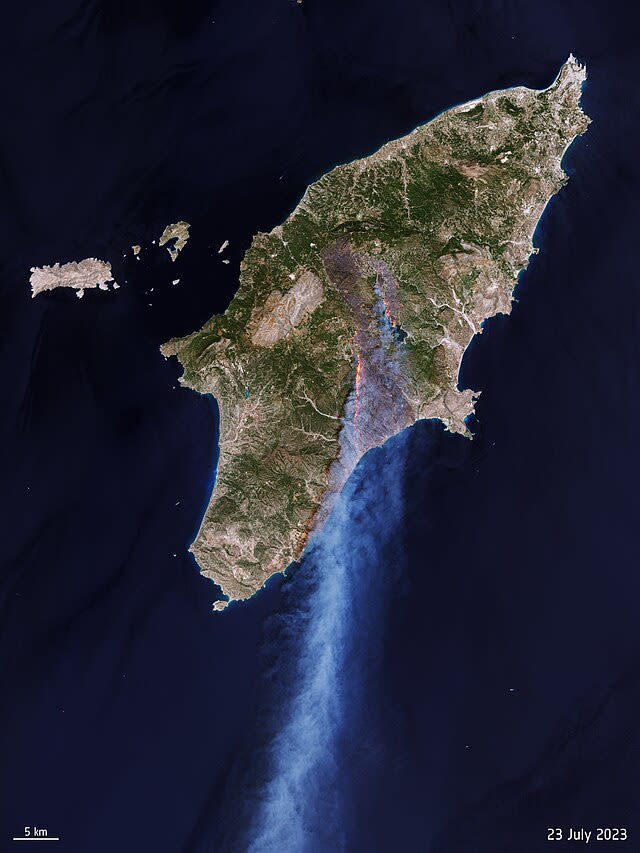
Greece
Residents and tourists fled Rhodes, a popular romantic destination in the Aegean Sea, as wildfires raged upon the island.
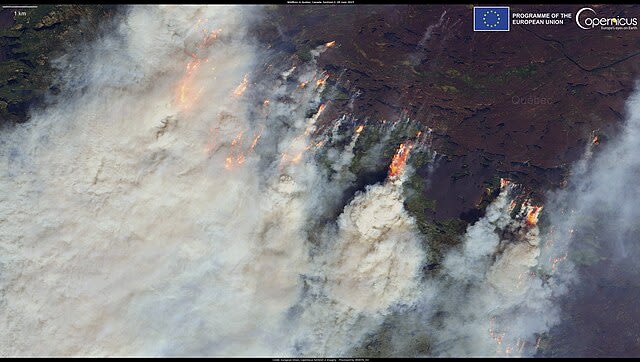
Canada
Wildfires roared in Alberta and Quebec, dislocating residents and notably reducing air quality in the Northern United States.
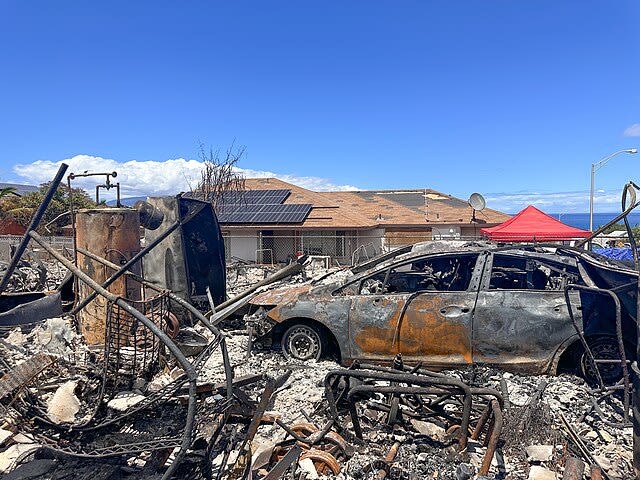
Hawaii
Destruction and devastation materialized as the former capital of the Kingdom of Hawaii, Lahaina, suffered from wildfires in August.
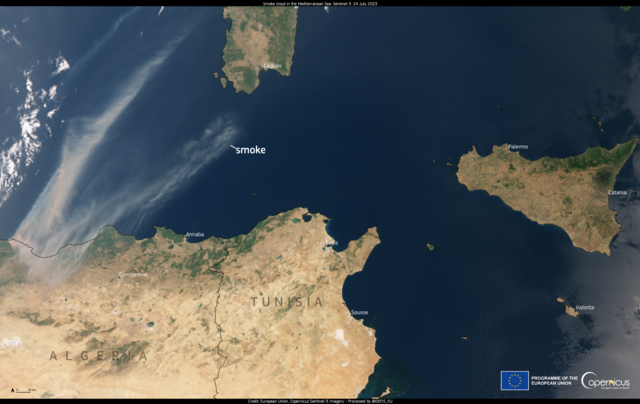
Tunisia
Extreme heat and drought conditions induced fatal wildfires that spread through Tunisia and Algeria.
8 Hours, 30 Cigarettes.
On June 7, New York had the worst air quality on Earth. Air quality levels in the city spiked to 342 on the air quality index—a rating considered "hazardous" by the EPA.
According to local non-profit paper Gothamist, an average 8-hour shift outside on June 7 for adults in Brooklyn would account for smoking 30 cigarettes.
Locals found themselves in an apocalyptic scene filled with eerie orange haze and reduced visibility.
Oliver Kabat, my friend and a high school junior in Manhattan, shared his bewilderment at the once-thought-impossible scenes in New York.
"It was just very weird—the sky was orange and looked like in a doomsday thing. We couldn't go outside during school, so we all had to wear masks...," Kabat said.
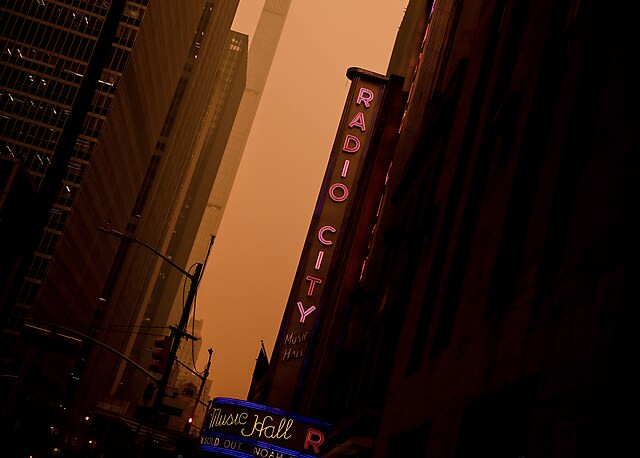
Smoke seen at Radio City Hall in New York. Photo courtesy of Wikimedia Commons.
Smoke seen at Radio City Hall in New York. Photo courtesy of Wikimedia Commons.
Laura Michaeli, my aunt and a New York-based emergency doctor, expressed the same sentiment.
"On a personal level, it felt like we were finally living in the dystopia we had all feared, sooner and more widespread than we’d realized was possible," Michaeli said.
Yet, key personnel must work outside to earn a decent wage. These workers faced even more severe consequences.
Sergio Ajche, the co-founder of Los Deliveristas Unidos, a group fighting for better conditions for delivery workers, told Gothamist he felt ill after working in the unsafe haze.
“By the end of the day, I had a headache, my throat started to hurt, my eyes burned,” Ajche said.
Despite unsafe conditions, employees battled through so they could survive.
“We must go to work. This is not easy. Here is not easy if you want money, if you want rent, if you want anything, you must work,” Fuad Qissi, an attendant at a gas station in Newark, said.
Reshaping Lives
Wildfires also bring another challenge to its victims: structural and emotional damage.
When fires streaked across the island of Maui in August, terror reigned on the Hawaiian enclave. Terrified residents attempted to flee by leaping into the Pacific Ocean.
Once extinguished, the fire transformed the former capital of the Kingdom of Hawaii, Lahaina into a wasteland.
In total, the Lahaina fire incinerated 2,170 acres of land, claimed at least 95 lives, and ruined at least 2,200 buildings. Repair estimates are expected to surpass $5.5 billion.
Per CBS, residents were alerted by the county sheriff of the potentially hazardous materials where the blazes ripped through, along with a dangerous water supply.
After the fact, Maui locals slammed the crisis response from the county. Sirens often used in emergencies like fires were not activated.
Hawaiian officials defended their decision by stating that locals would believe there was a tsunami warning rather than a wildfire.
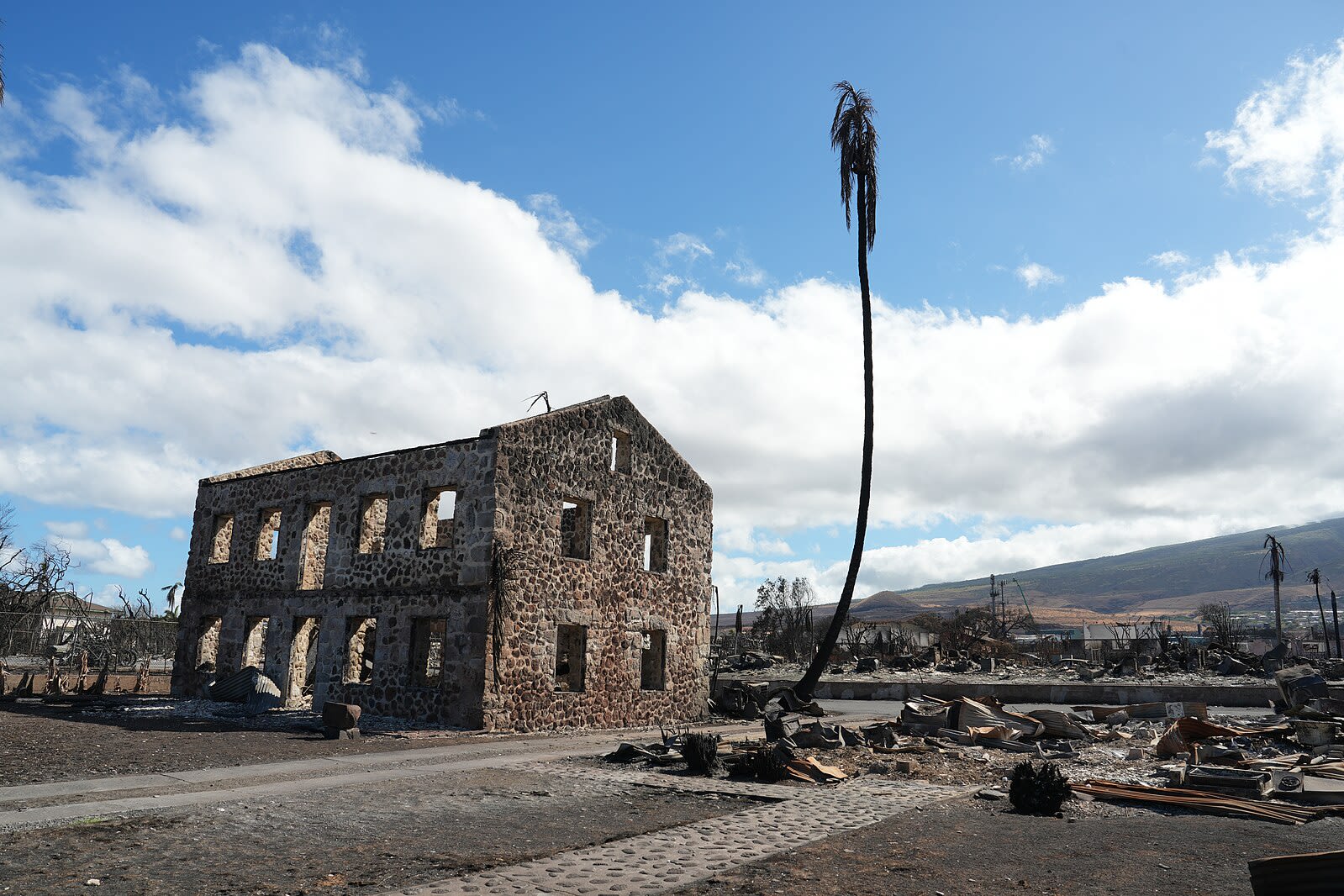
Remains of the U.S. Seamen's Hospital after wildfires blazed through the historic town of Lahaina on the island of Maui. Photo courtesy of FEMA and Wikimedia Commons.
Remains of the U.S. Seamen's Hospital after wildfires blazed through the historic town of Lahaina on the island of Maui. Photo courtesy of FEMA and Wikimedia Commons.
Regardless, a fault in communication frequently leads to deadlier natural disasters. Sometimes, those warning systems are not clear.
"I absolutely think we should look at the overall adequacy of warning systems, and we should always be thinking about how we can improve warning systems," Sarah DeYoung, a faculty member at the University of Delaware's Disaster Research Center, said.
In response, four days ago, Hawaii Attorney General Anne Lopez delivered subpoenas to three Maui agencies in control of the emergency response.
The wildfires threw the island into a state of devastating despair that continues to cloud the oft-sunny town.
Debbie Scott, a social worker on the island, observed a shift in emotion after the disaster.
"I am noticing that there is an uptick in very dark thoughts, suicidal thoughts, passivity in terms of ‘I don’t know what I’m going to do. I just don’t even know if I want to be here,’” Scott said. “Losing pets and losing every belonging, losing history, losing tradition, has left souls pretty empty.”
Even in times of crisis, the mental health services on the island remain thin, intensifying the crisis.
"It’s extremely rare to find a Native Hawaiian therapist on the whole island of Maui," Kalena Lanuza, a mental health practitioner who specializes in helping Native Hawaiians experiencing pregnancy or shortly after birth.
NBC News reported that some survivors cope with the realities by invoking beloved indigenous traditions.
It’s extremely rare to find a Native Hawaiian therapist on the whole island of Maui
Others escape to the ocean. In September, locals assembled in a circle and celebrated the lives lost in the fires by taking part in a paddle-out, a Hawaiian tradition.
So, does climate change play a role in wildfires?
The link between climate change and wildfires remains weak, yet Pan says the management of fires in North America is not.
“But what’s not shaky is this idea of how we’ve managed forest fires. For 85 years or so, the official policy of the U.S. Government has been to suppress all fires. What’s happened is that led to a buildup of brush and timber and dead stuff on the ground. That stuff burns like there’s no tomorrow,” Pan said. “So, for the northern and eastern part of it, it’s just bad forest management on our part.”
Furthermore, Pan explains that some biomes lend to fire and need to burn. These locations include Southern California and the Mediterranean. In this case, humans decided to build in fire-prone spots.
“People are building in areas that are prone to fires, even before global warming. And I get it because it is beautiful country, but you are building in a place that is designed to burn," Pan said.
Dry weather may be another intensifier for fires.
While the causes responsible for the Maui inferno are not known, Maui indeed suffered from a dry spell and high winds from a powerful Hurricane Dora offshore.
Droughts and dry weather might exacerbate the fires, but they cannot always connect to climate change.
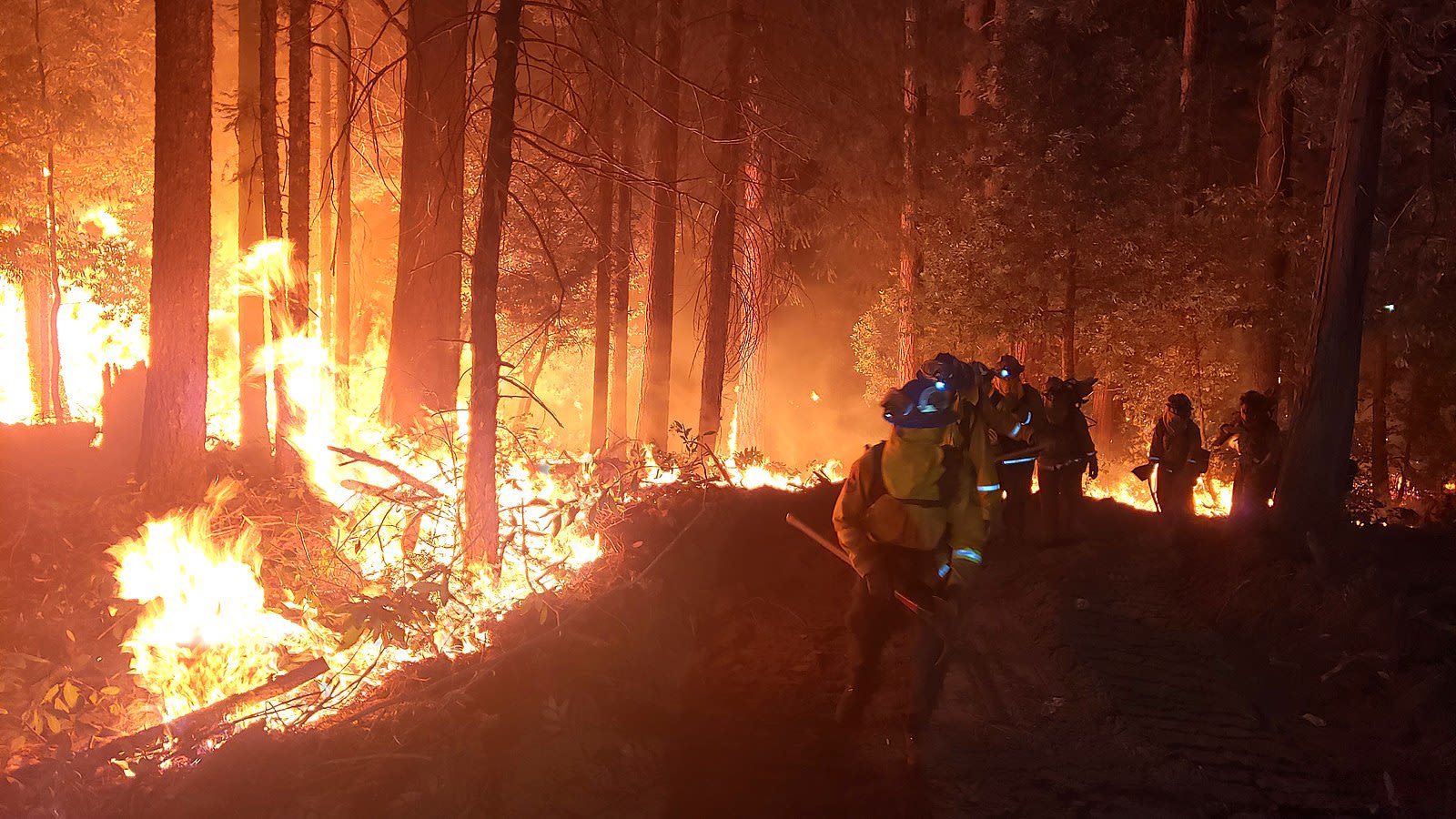
Firefighters assess the Zogg Fire, caused by equipment used by PG&E. Photo courtesy of Wikimedia Commons.
Firefighters assess the Zogg Fire, caused by equipment used by PG&E. Photo courtesy of Wikimedia Commons.
In recent years, California and the American West saw an uptick in wildfires due to an intense drought.
Pan says drought isn't uncommon in the West, but might be worse due to global warming.
“California is particularly an issue and the Pacific Northwest because they’ve had such a drought, but droughts are not uncommon in that part of the country," Pan said. "Are they being exaggerated by global warming? My guess is yes, but it’s a dry part of the country."
According to PBS Newshour, scientific evidence confirms that droughts worldwide were exacerbated due to global warming.
While lightning and dry weather may cause wildfires, 85 percent of wildfires are human-caused. Small fires rejuvenate forests, but anthropogenic wildfires often grow uncontrollably.
Last year, Pacific Gas & Electric settled for more than $55 million in damages to to elude litigation after two large wildfires broke out in California due to worn-out power lines owned by the company.
Prosecutors accused Pacific Gas & Electric of initiating more than 30 wildfires since 2017, eradicating 23,000 homes and businesses and killing more than 100 lives.
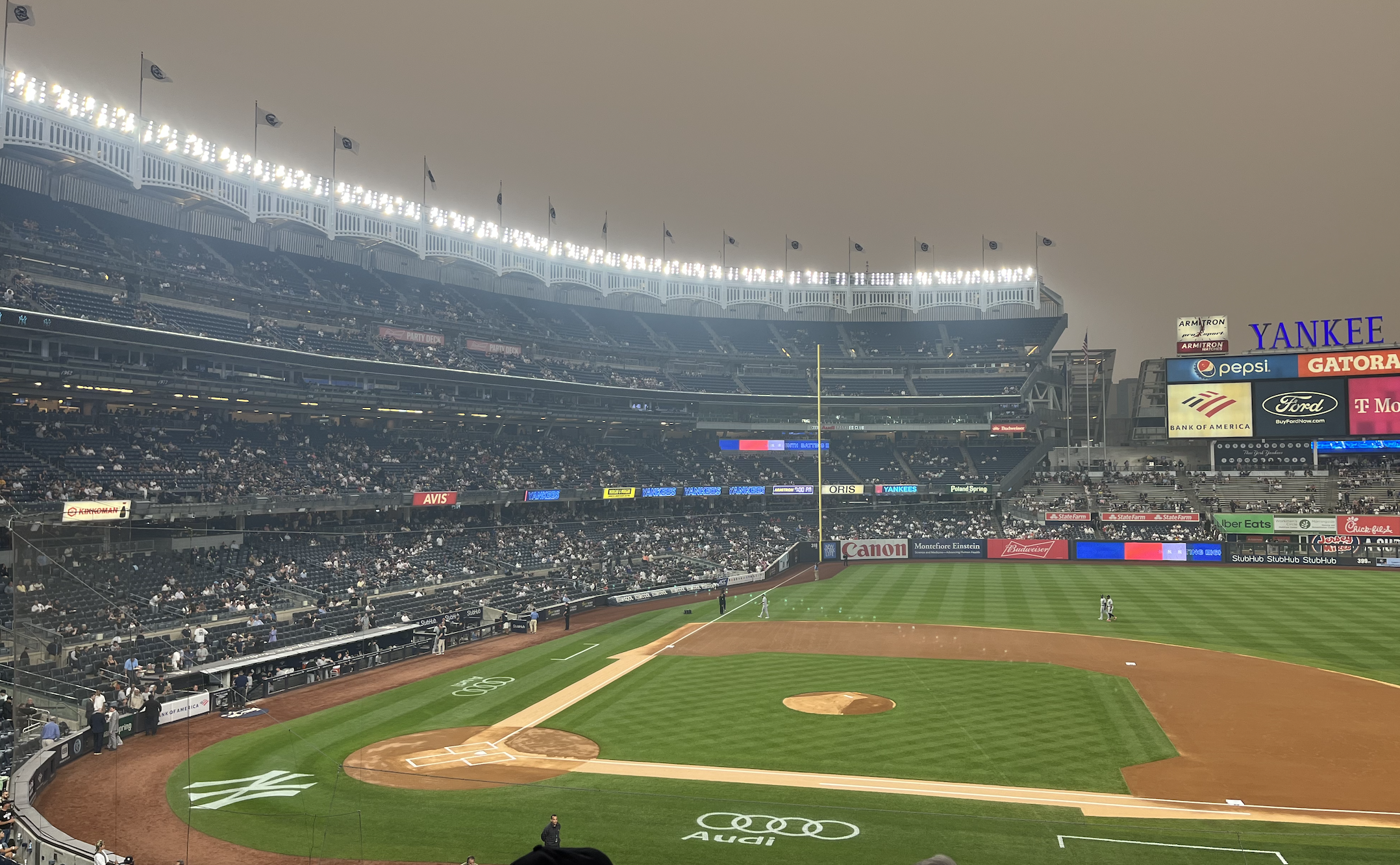
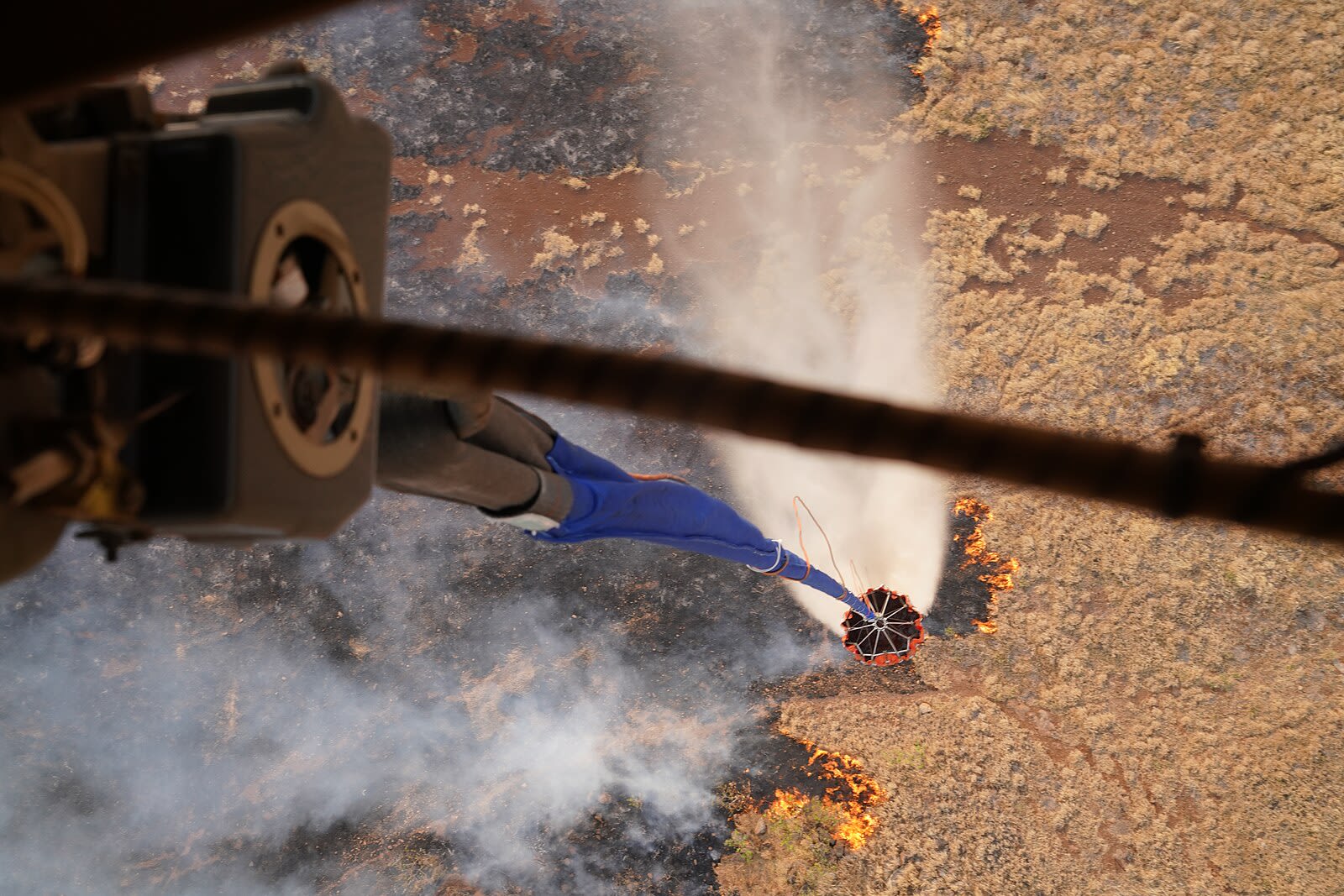
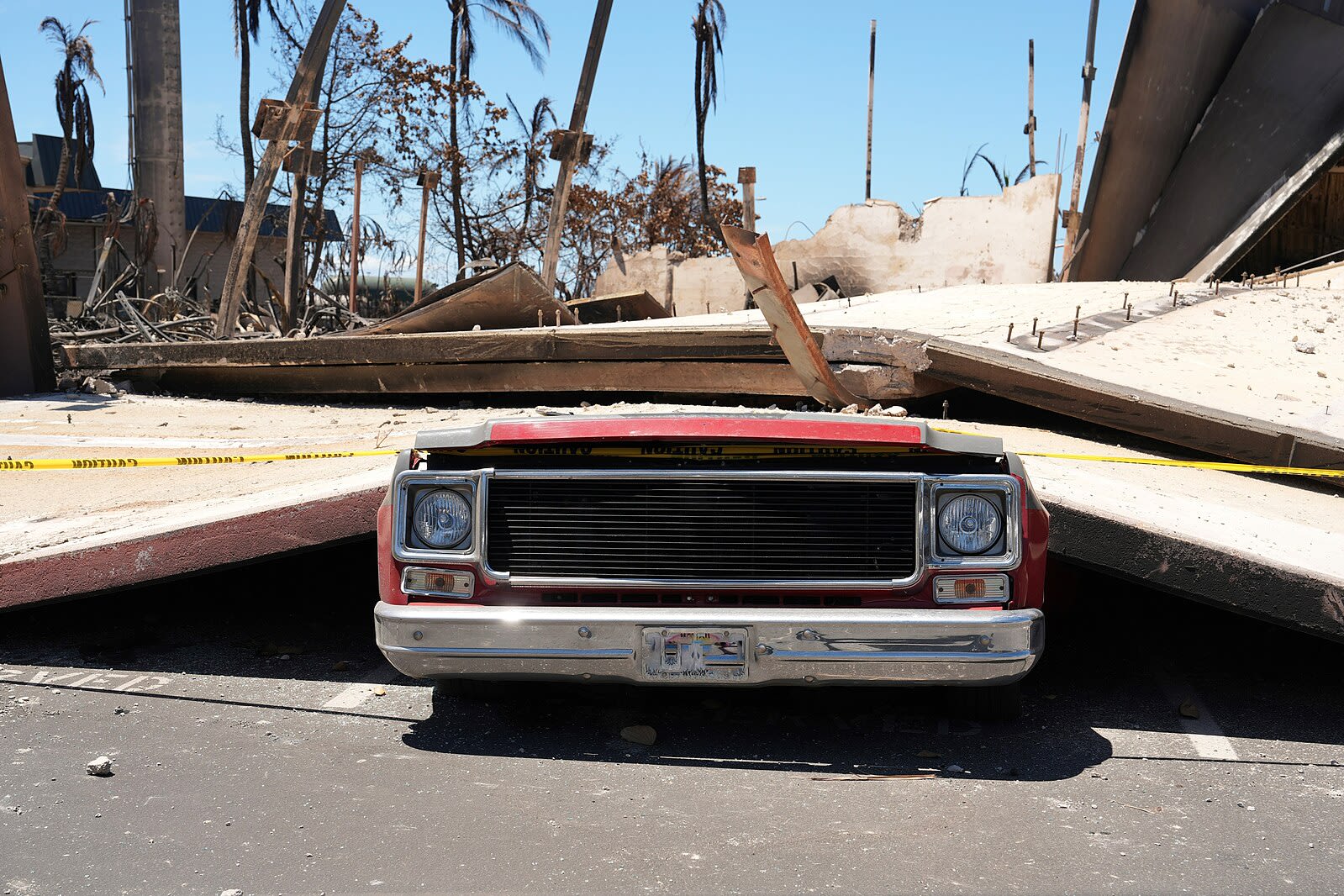
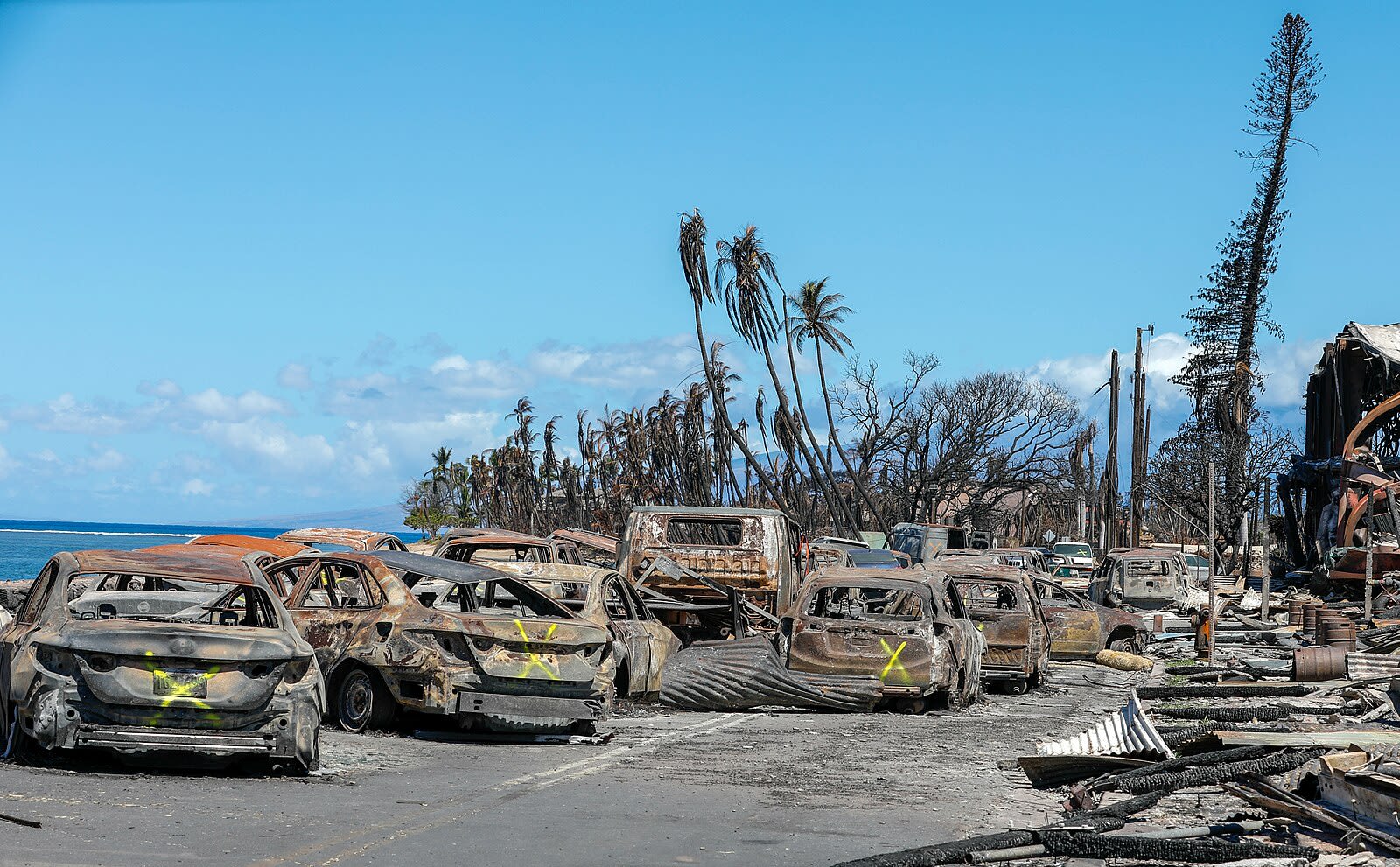
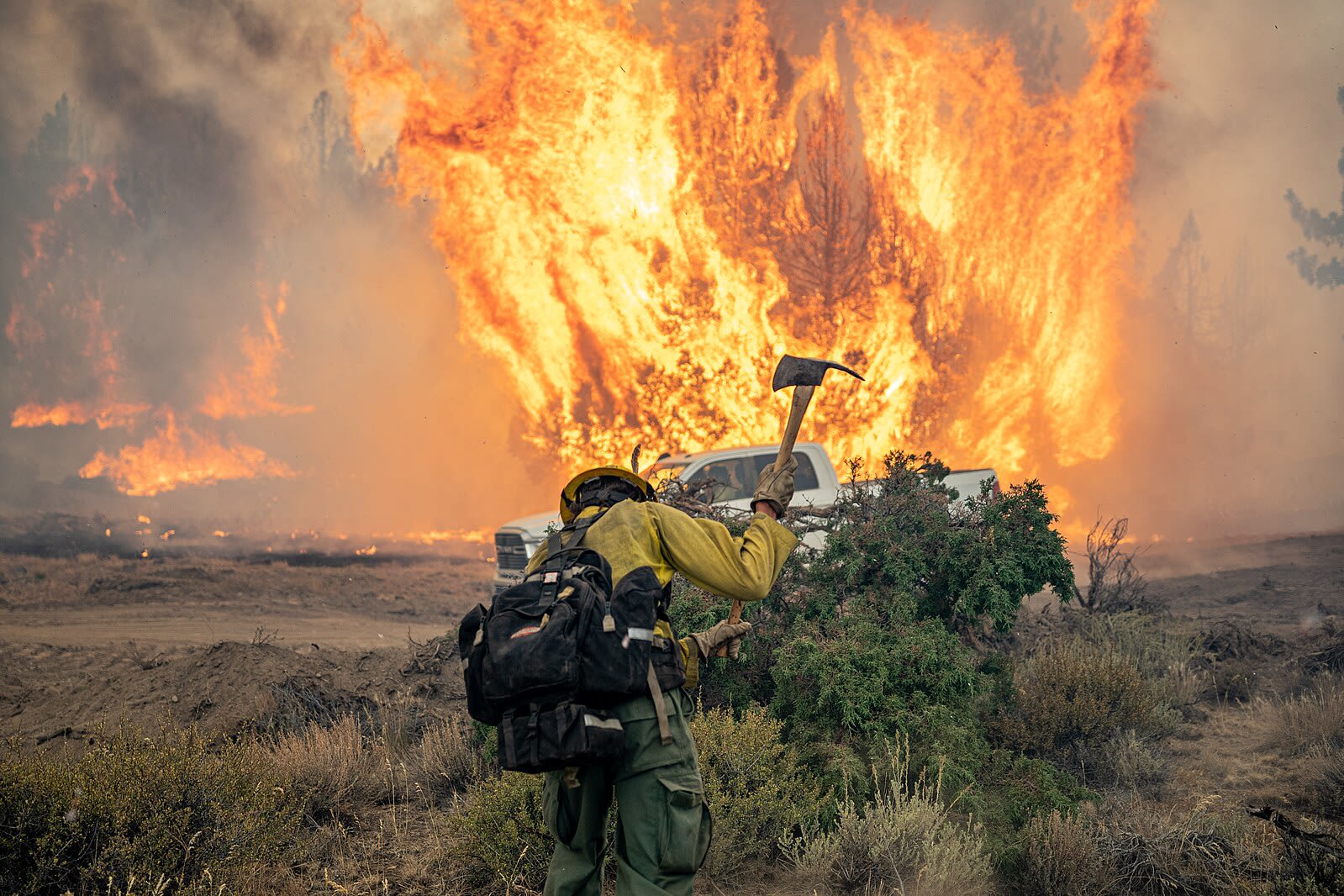
Daily Life Impacted by Smoke
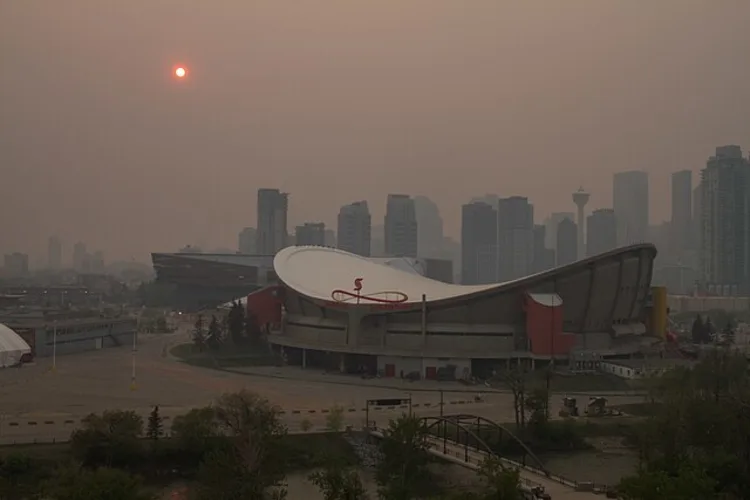
Smoke blankets the Canadian city of Calgary. Photo courtesy of Wikimedia Commons.
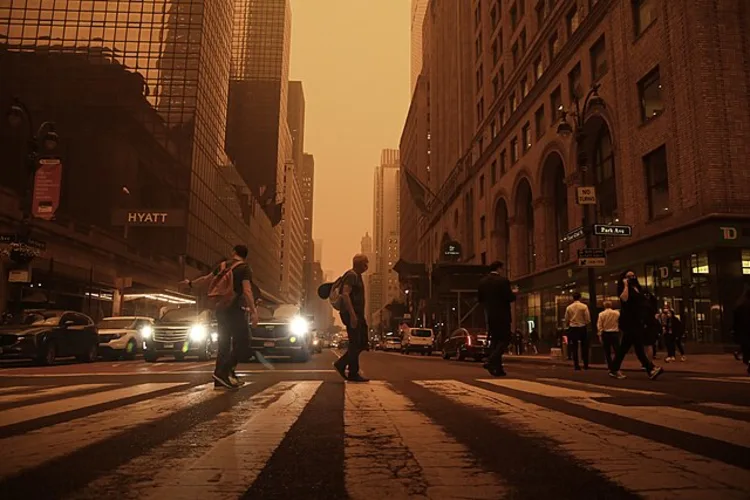
People seen wearing face masks as smoke covers Park Avenue in New York. Photo courtesy of Wikimedia Commons.
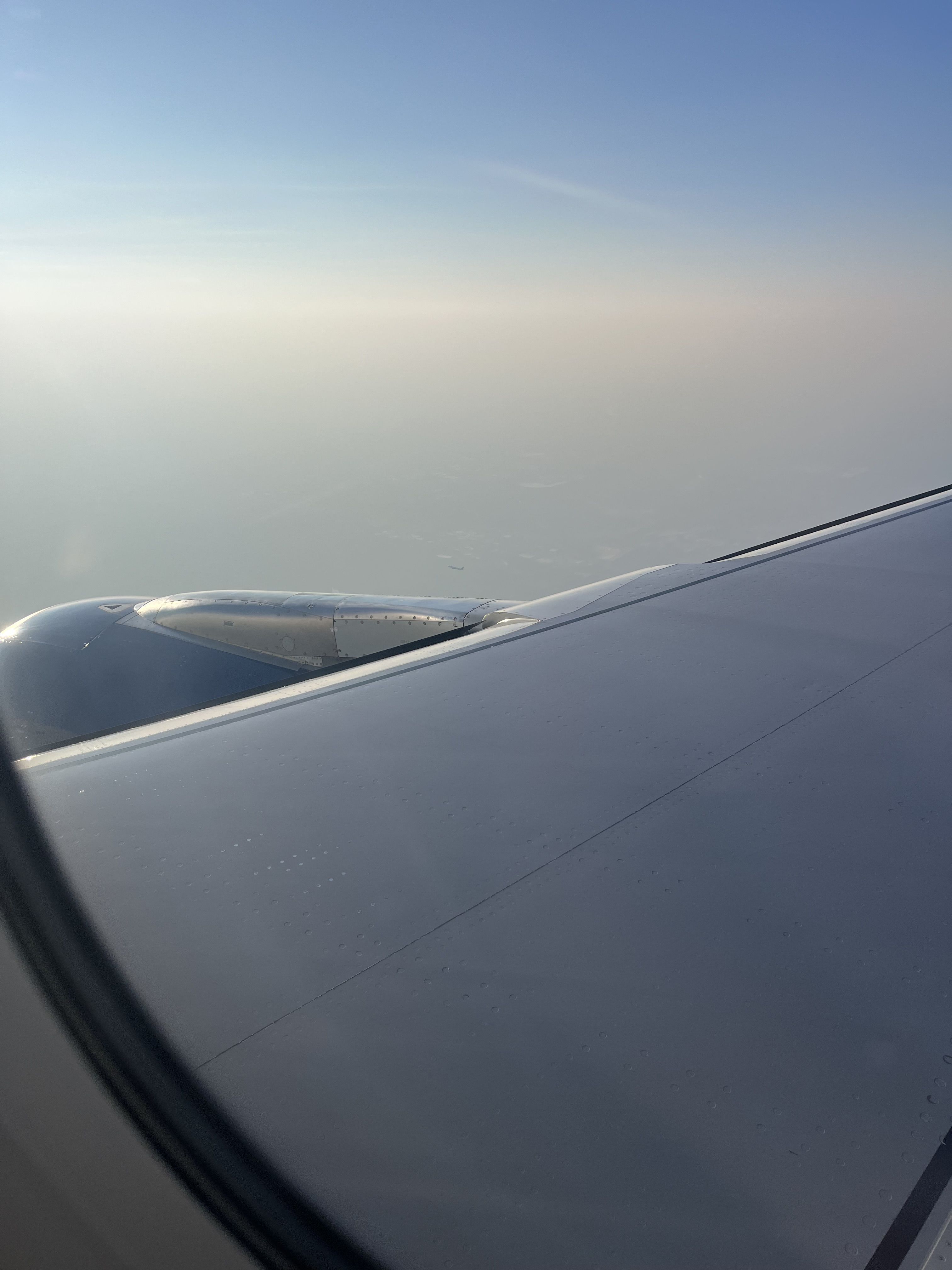
Smoke upon arrival at Atlanta-Hartsfield Jackson Airport. Photo courtesy of Evan Michaeli.
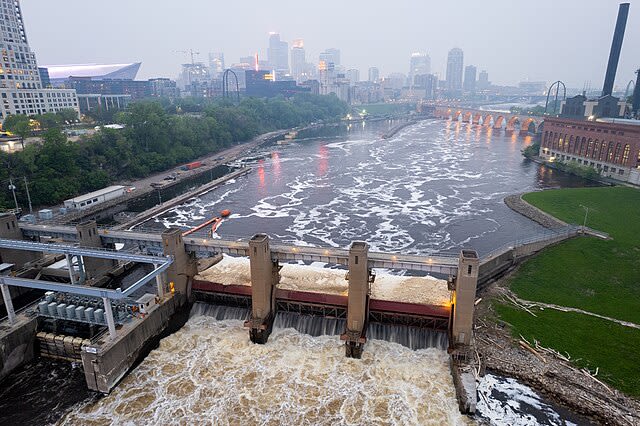
A view from the Mississippi River as a haze shrouds the skyline of Minneapolis. Photo courtesy of Wikimedia Commons.
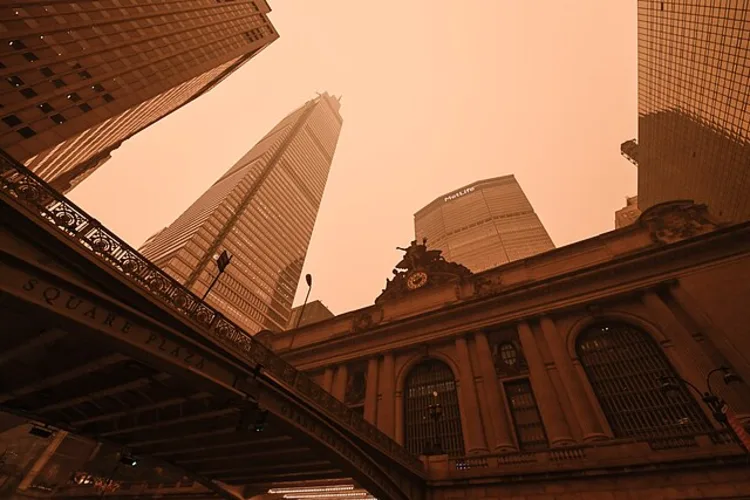
Grand Central Terminal cloaked in smoke in New York. Photo courtesy of Wikimedia Commons.
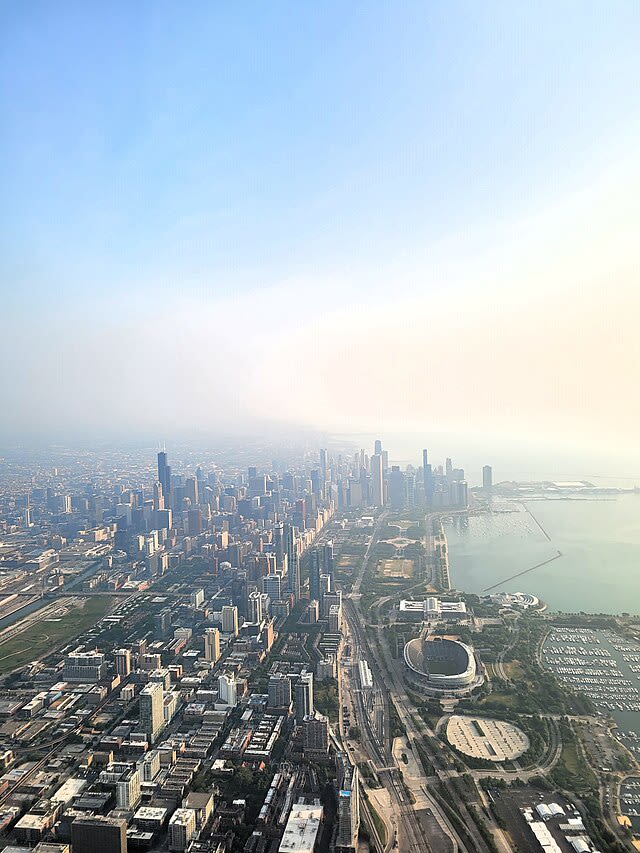
Smoke shown in aerial picture of Chicago. Photo courtesy of Wikimedia Commons.
Pollution
Choking on our lifestyles.
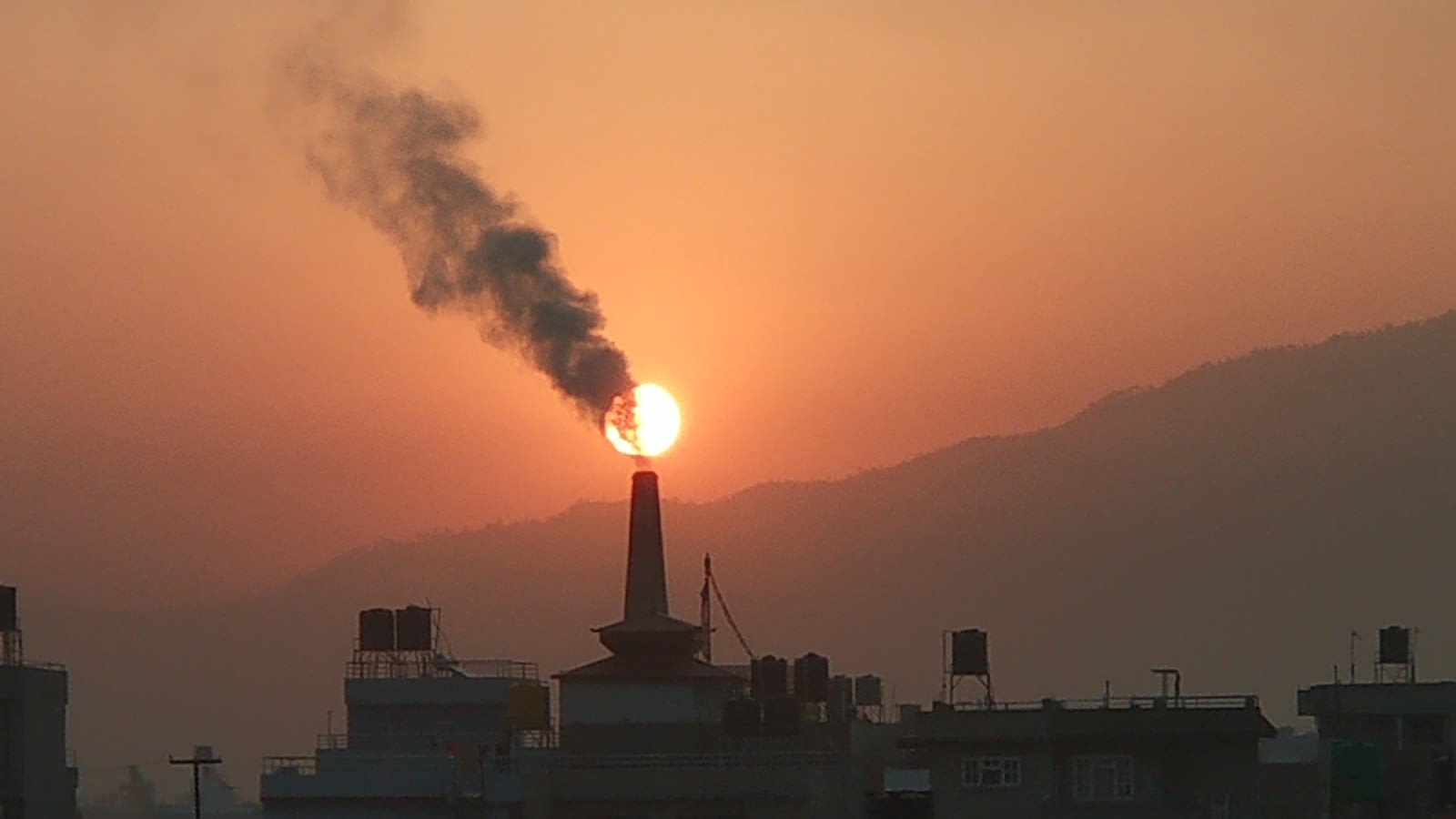
On November 3, a toxic haze besieged residents and tourists in Delhi earlier this month. The air quality index in Delhi was an absurd 640. That is 100 times worse than the World Health Organization's limit.
Sri Lankan and Bangladeshi cricketers skipped practices due to the smog, and when practice resumed, players donned masks while their asthmatic teammates sat out. The two nations eventually played, subjecting players and fans to the noxious air. During the tournament, Delhi ranked as the most polluted city in the world five times.
For Delhiites, life became a struggle. Citizens scrambled to find air purifiers as supplies ran low and schools shuttered their doors for a week, opting for online classes instead.
Video displays the toxic haze in Delhi. Video courtesy of Kushagra Khurana.
Video displays the toxic haze in Delhi. Video courtesy of Kushagra Khurana.
Kushagra Khurana, a student in Delhi I reached out to, noted the difficulties of missing class due to the smog.
"Now they [sic] schools have to cram the tests in a week where we used to have one test in a week. Due to the shutdown, we have to give two tests a week," Khurana said.
Sadly, Delhi residents often face the misery of contaminated air. Every November, the air quality plummets and the smog returns with a vengeance, stifling the city.
The cause? A mix of pollutants of a rapidly growing city, parali burning, and unfortunate geography.
For starters, Delhi is the second-largest city behind Tokyo. Delhi's population is rapidly expanding, as the metropolis saw an increase of 875,000 people in 2022. Estimates say that Delhi will have 36 million inhabitants by 2025.
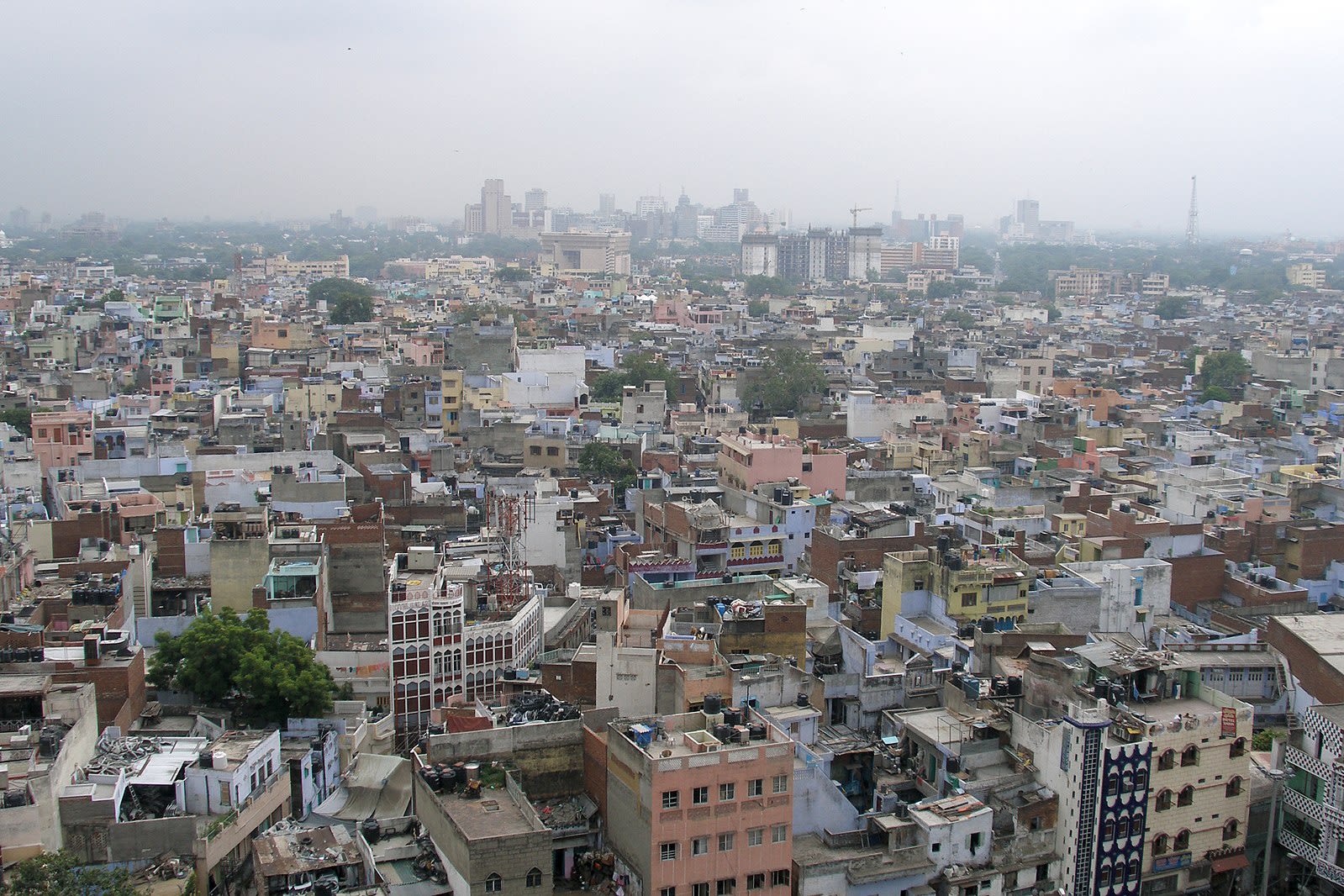
A wide angle view of the skyline of Delhi. Photo courtesy of Wikimedia Commons.
A wide angle view of the skyline of Delhi. Photo courtesy of Wikimedia Commons.
Naturally, Delhi faces ceaseless construction. The constant building leaves dust and other particles lying around. Construction is believed to contribute 30 percent to the pollution in Delhi.
Moreover, the cars present in Delhi, mainly the BS3 petrol and BS4 diesel cars, are less fuel-efficient and discharge more carbon dioxide than the standards set by the Indian government.
Pan sees a clear connection between the particulates in Delhi and its pollution troubles.
“When I look at Delhi… that is a particle pollution thing,” Pan said. “That is such a clear case of it.”
Another factor in Delhi’s pollution is parali burning, more commonly known as stubble burning. Delhi’s neighboring provinces, Punjab and Haryana cultivate around 17 percent of the kharif rice in India. Additionally, in Punjab alone, 17 million metric tons of wheat was grown in 2021.
There are two harvest seasons in Punjab; May to September and November to April. In November, farmers harvest the rice while sowing wheat. Once they harvest, the farmers scorch the land to rid the field of debris for the next growing season.
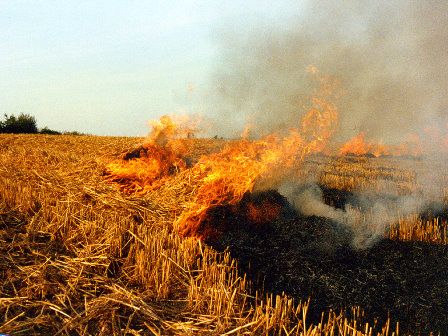
Stubble burning in autumn causes Delhi's air quality to deteriorate in the fall. Photo courtesy of Wikimedia Commons.
Stubble burning in autumn causes Delhi's air quality to deteriorate in the fall. Photo courtesy of Wikimedia Commons.
According to NASA, these fires emit greenhouse gasses and other toxic particulates into the air, forming a haze.
Despite the adverse effects, farmers say they are left with no choice.
In an interview with India Today, Jasvir Singh, the Head of the Bhartiya Kisan Union Ekta Sidhupur, said, “There is no provision to pick up the stubble with the farmers. Nor do we have someone who picks it up together.”
Business Standard reported that farmers have a limited amount of time to eliminate the debris, in most cases, two to three weeks maximum, and stubble burning is cost-effective.
Add a dash of unfortunate geography, and you have a deadly combination.
Delhi lies in the Himalayan foothills. The mountain range acts as a barrier, moving the smoke from the parali burning toward Delhi. Moreover, in the winter, warm lowland air rises above the frosty air arriving from the Himalayas.
This is often known as thermal inversion.
“Thermal inversion is when pollutants trap temperatures near the ground. And it usually has to do with places where there are canyons,” Pan said.
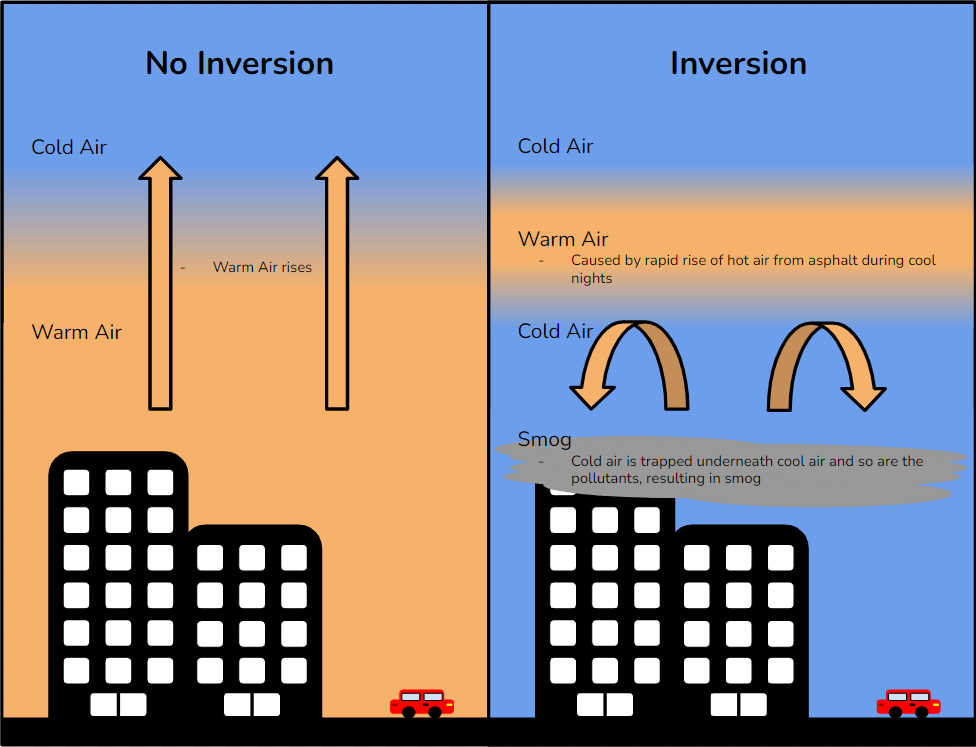
Diagram explaining how thermal inversion traps pollutants and forms smog. Photo courtesy of Wikimedia Commons.
Diagram explaining how thermal inversion traps pollutants and forms smog. Photo courtesy of Wikimedia Commons.
Indian policymakers try to assuage the damage by restricting cars and prohibiting intentional burning, yet the goal should be to prevent harm. However, disputes derail all attempts to pass significant legislation–dampening the efforts.
“Unfortunately, there is just no political will to solve this problem from any party. There is not one party that has put its head down and said, 'We are sickening the entire country and let’s fix it'," non-profit Care for Air co-founder Jyoti Pande Lavakare said.
Instead, officials play their favorite pastime: the blame game.
The Bharatiya Janata Party believes that the Aam Aadmi Party leader and chief minister of Delhi Arvind Kejriwal isn’t taking enough action to curb pollution.
The Aam Aadmi Party chided the federal government because of its frivolous response to pollution: slashing monetary means to fight the problem.
The health dangers are far too great for inaction to continue.
Delhi resident Mahi, whom I connected with through a mutual friend, shared that their bronchioles were obstructed because of the air. Furthermore, Mahi expressed her frustration with the noxious air despite having little impact on the pollution in Delhi.
"Imagine you never smoked in your life, but still you breathe air which causes you ingestion problems," Mahi said.
Mahi is not alone.
In Delhi, Dr. Aheed Khan shared the detrimental effects of the poisonous smog on X.
"In my last 24 hour duty, I saw babies coughing, children coming with distress and rapid breathing; and while coming back home in the morning, I saw stray dogs and cats that I feed, coughing with watering eyes," Khan said.
In an opinion article for the Washington Post in 2019, Dr. Arvind Kumar, a surgeon at Sir Ganga Ram Hospital and a founder of the organization Lung Care Foundation wrote, “Over the years, I have witnessed a change in the color of patients’ lungs from pink to black. It is a rarity for me to see a normal pink lung in any adult patient today.”
Kumar wrote that the pollutants can also enter a human’s body and access blood circulation, affect unborn babies, and are correlated to a higher risk of asthma and lung cancer.
“Even more disturbing is the change in lung cancer patterns I’ve witnessed over the past three decades: an overall increase, a higher occurrence in younger people and a high incidence among nonsmokers,” Kumar said. “I’ve seen young people who’ve never smoked come in with stage four lung cancer — robbed of their lives because of the inaction of their elders.”

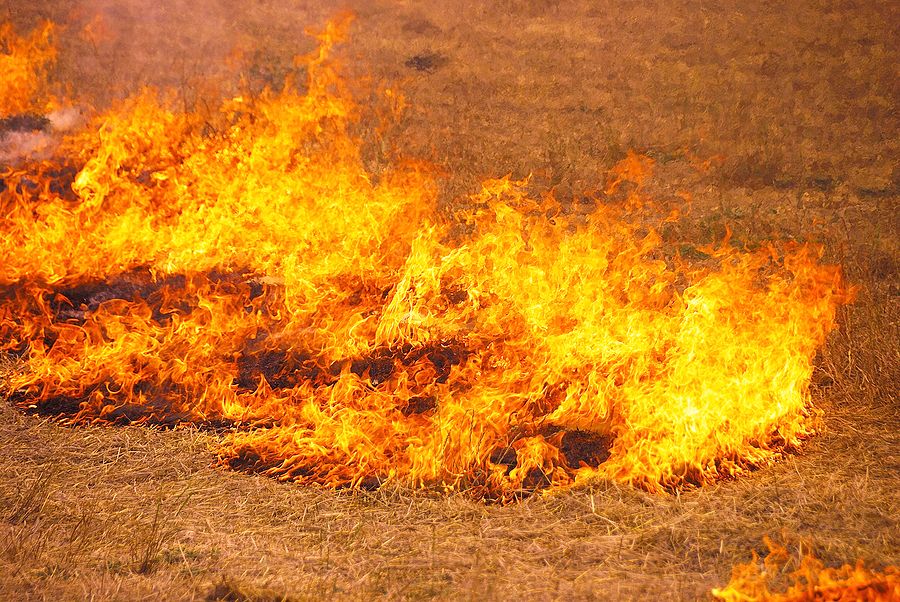
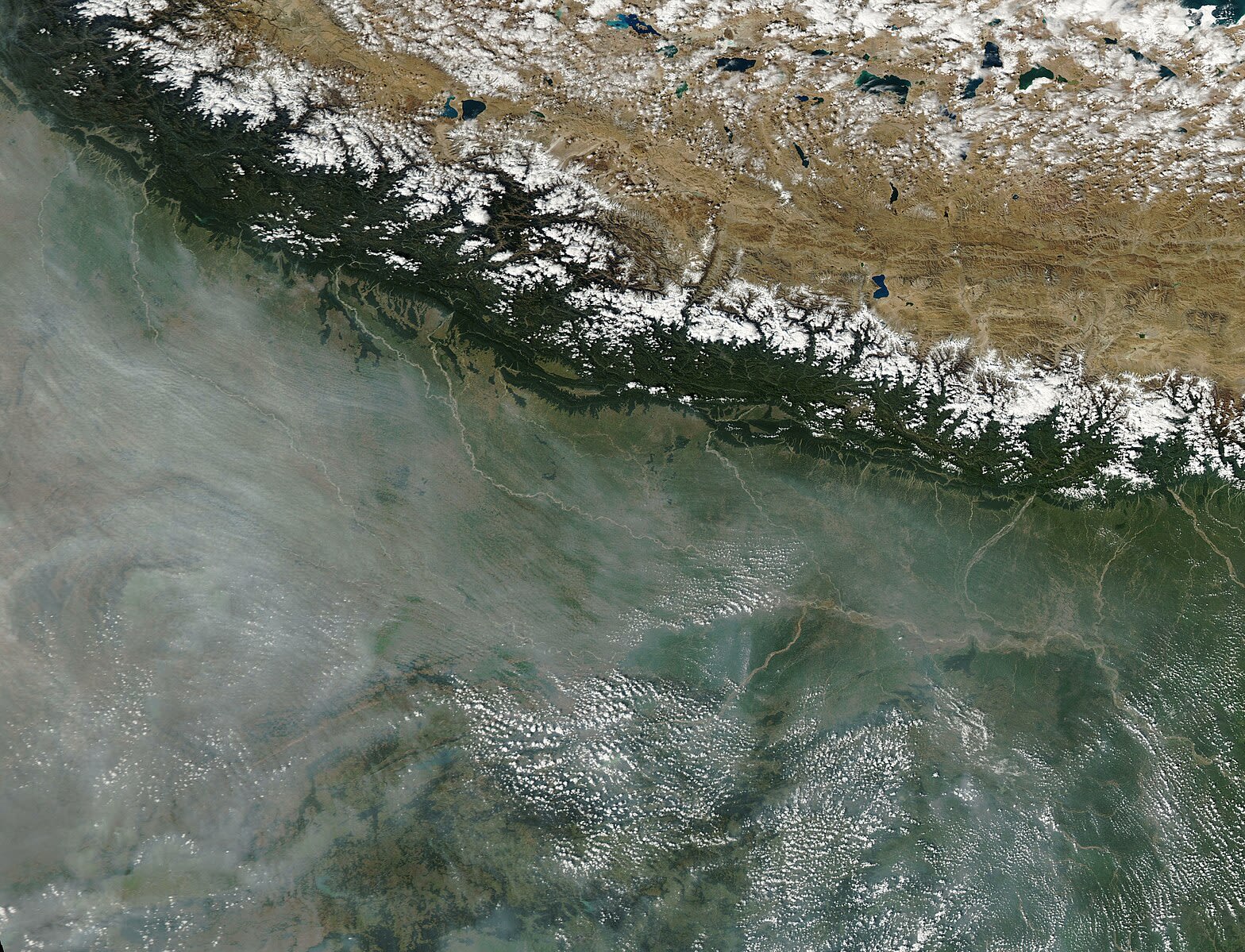
The Plastics Problem
Pollution isn’t strictly confined to the atmosphere. Plastic pollution is equally distressing.
We often vilify plastics when we see single-use plastic products strangle innocent marine animals or scattered throughout exquisite beaches and translucent waters.
And for good reason.
A report from 2020 showed that more than 900 marine species were affected by plastic pollution either from strangulation or ingestion.
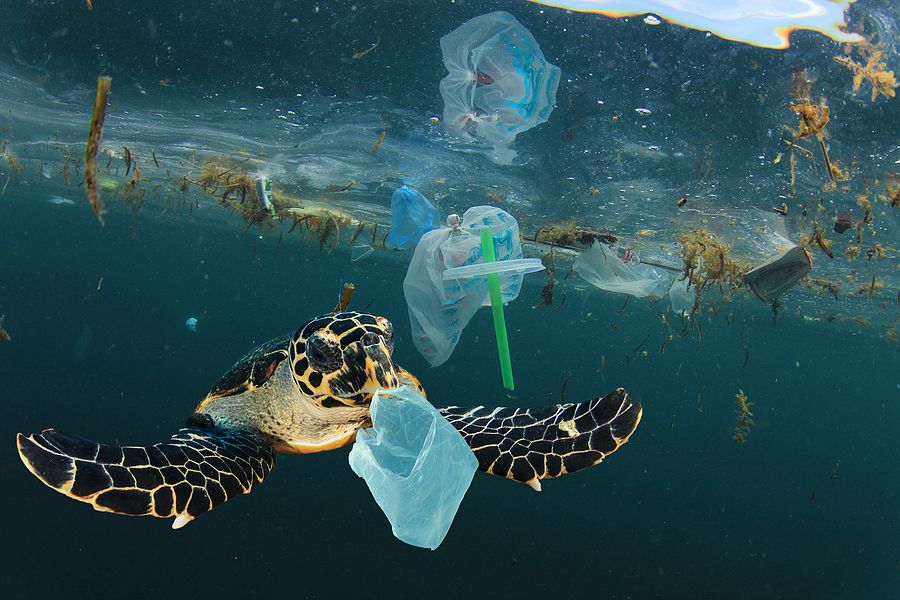
A sea turtle wades by an expansive heap of plastic with a single-use bag lodged in its mouth. Purchased on BigStock.com.
A sea turtle wades by an expansive heap of plastic with a single-use bag lodged in its mouth. Purchased on BigStock.com.
Furthermore, certain compounds in plastics like BPA copy estrogen. During a panel hosted by the Environmental Club last year, Reese Reiling, an assistant at Urban Harbors Institute at UMass Boston noted that fish in the Boston Harbor are becoming more feminine due to plastic pollution.
Bali, a premier vacation destination known for its immaculate beaches, now disappoints eager travelers as plastic floats in the clear waters and amasses on shore.
And the Great Pacific Garbage Patch is so big, a new ecosystem depends on the artificial landmass.
However, we must not forget the role that fossil fuels play in the making of plastics.
First, plastic is a byproduct of petroleum. When extracted and refined to make plastic, the fossil fuels emit greenhouse gasses. Those greenhouse gas emissions are significant.
“When you add together all the greenhouse gas emissions related to plastic, they are greater than the emissions of every single country except for the U.S., China, India, and Russia … If plastic were a country, it would be the fifth largest emitter of greenhouse gasses in the world,” Christy Leavitt, the plastics campaign director at Oceana said.
Furthermore, oil companies obstruct progress in recycling, intentionally misleading the public. An insider on the fossil fuel business shared with NPR that the industry pushed these lies because “selling recycling sold plastic, even if it wasn't true.”
In 2020, Greenpeace released a study proving that most plastic is indeed not recyclable. Just this year, Greenpeace issued another report saying that recycled plastic has the potential to be even more toxic and is not a viable solution.
Given the gravity of the issue at stake, you would assume that ambassadors would work all day to push along a legally-binding plastics treaty during the Intergovernmental Negotiating Committee (INC) meeting at the United Nations Environment Progamme’s headquarters in Nairobi, Kenya two weekends ago.
Regrettably, oil barons dictated conversation–sending more lobbyists than ambassadors from 70 countries combined. Moreover, personal interests from oil-producing countries such as Saudi Arabia and Russia advocated for an enhanced importance on waste management, rather than stemming plastic production altogether.
Delegates failed to reach the goal of having a first draft complete at the end of INC-3 and voted against an additional meeting before the next edition in Canada. Delegates have one more year to provide a comprehensive draft.
"This is not progress. This is chaos," Graham Forbes, head of delegation at Greenpeace, said.
This is not progress. This is chaos.
To say this is a disappointment is an understatement. Our biodiversity hangs in the balance–we cannot allow plastic to chokehold our planet.
Instead, the treaty should focus on extended producer responsibility, commonly referred to as EPR. Currently, popular culture assigns the consumer responsible for plastic pollution. While recycling is a good method and littering is a horrible thing to do, producers are ultimately the ones culpable for plastic pollution.
They create the mess after all.
EPR would shift the responsibility back to producers from the very beginning of production to decomposition. EPR also focuses heavily on recycling and reusing rather than disposal, creating new items at a higher rate.


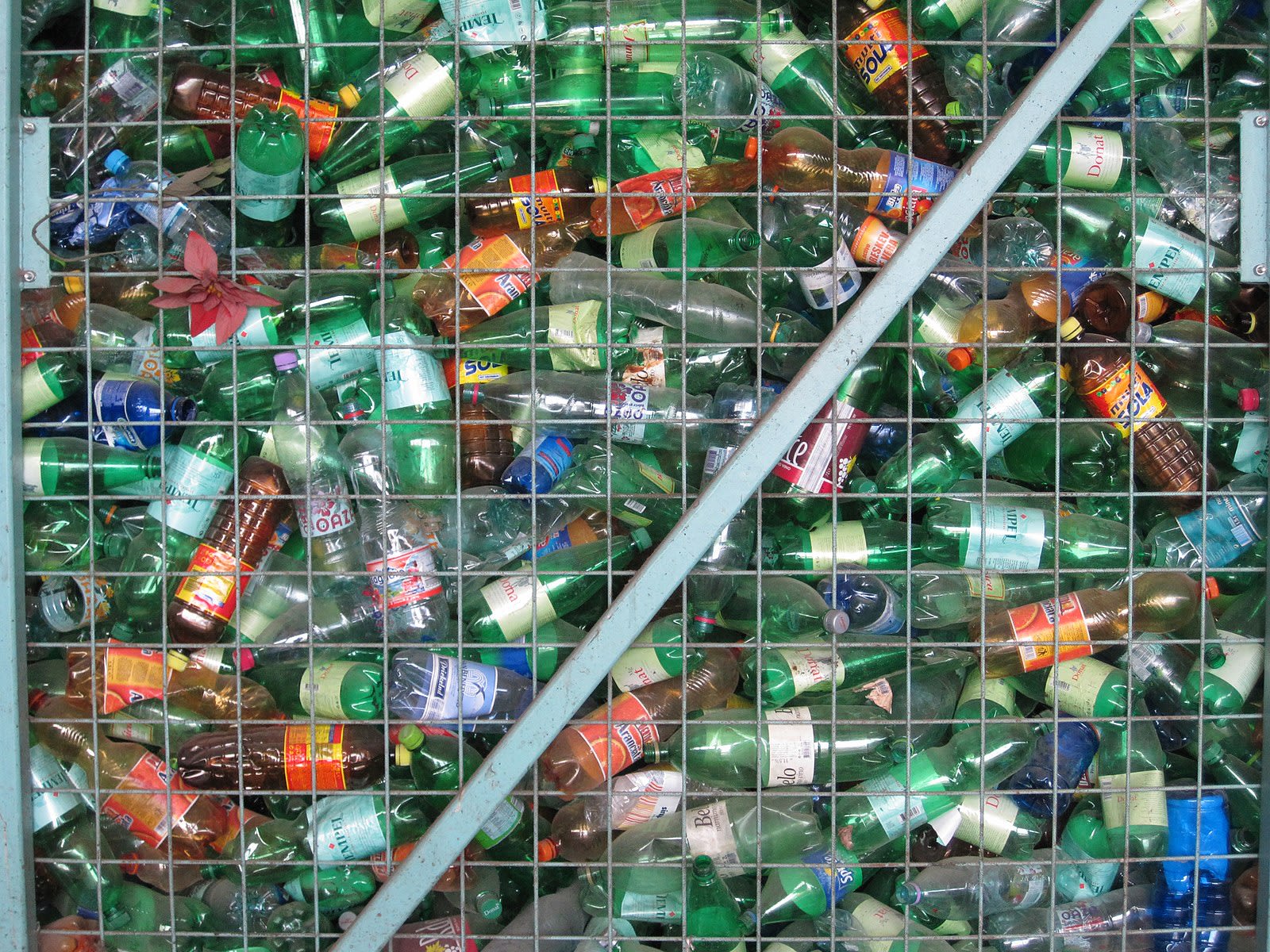
Flooding
Sweeping away lives.
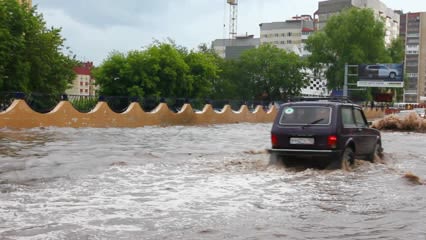
In July, extensive flash floods drenched the state of Vermont, particularly the state capital, Montpelier. A record of 5.28 inches of rain fell on the city, ravaging thousands of homes and businesses.
The storm brought comparisons to the floods when Hurricane Irene paid a visit in 2011.

The rainfall map issued by the National Weather Service after extreme floods in Vermont. Photo courtesy of the National Weather Service and Wikimedia Commons.
The rainfall map issued by the National Weather Service after extreme floods in Vermont. Photo courtesy of the National Weather Service and Wikimedia Commons.
“With Hurricane Irene, the water was raging like this, but it never really got to the house,” Betsy Hart, a Windsor County resident said.
Vermont was not the only New England state ravaged by floods.
Massachusetts saw record floods as well.
One deluge in July transformed Fenway Park into a waterpark during a Red Sox game. Photos and videos showed water cascading down the stairs and flooding the concourse.
Upper School Math Teacher Pete Slaski attended the game.
"It started pouring rain to the point where the game wasn't going to be playable," Slaski said. "We hung around for about an hour and I finally left... it didn't seem like they were ever going to get the field playable."
But the rain turned to disaster on two separate occasions.
In August, North Andover homes and businesses were submerged in six inches of rain. The following month, a storm dropped ten inches of rain on the town of Leominster in six hours.
North Attleborough resident Nathan Bonneau told the Associated Press his home was inundated in the Leominster flood.
“It just kept getting worse,” Bonneau said. “I watched the water go from trickling into my garage floor to coming in my front door in a matter of 35 minutes.”
I watched the water go from trickling into my garage floor to coming in my front door in a matter of 35 minutes.
Officials continue to raise concerns over the structural state of the dams in New England, crucial to saving lives in the torrential rain events that played out this summer.
In February, the American Society of Civil Engineers graded Vermont’s dams a ‘C’.
The report said, “With many dams in poor condition and the recent increase in larger and more intense floods, the risk of dam failure is increasing.”
Massachusetts isn’t faring much better. The Department of Conservation and Recreation's Office of Dam Safety gave CBS News Boston a list of more than 200 dams deemed to be “structurally deficient.”
The Weather Channel reported that multiple dams have failed in the past, including 50 alone in the last century in New Hampshire.
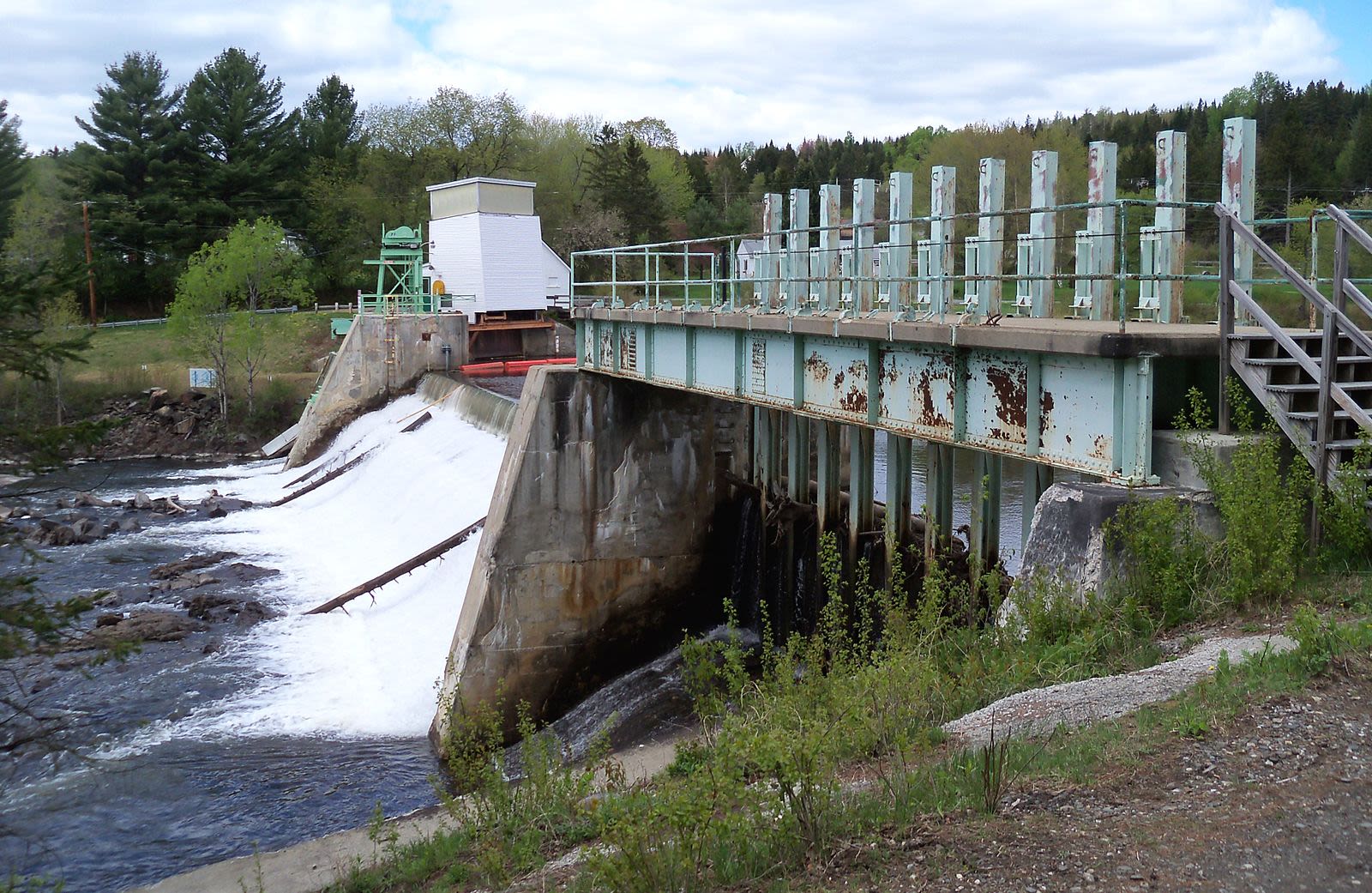
A dam stands by the Connecticut River in New Hampshire. Photo courtesy of Wikimedia Commons.
A dam stands by the Connecticut River in New Hampshire. Photo courtesy of Wikimedia Commons.
Pan says it is rash to rush and connect these isolated storms to climate change,
“It’s hard to tell whether those are climate change or just weather patterns," Pan said. "There is some indication that we are moving toward a wetter climate in Massachusetts, but that’s not necessarily tied to those floods because those kinds of floods happen every once in and while just by the matter of course and weather. But it will be curious to see if those floods continue to happen more frequently.”
However, Pan mentioned that scientists often predict a northward shift in rain patterns.
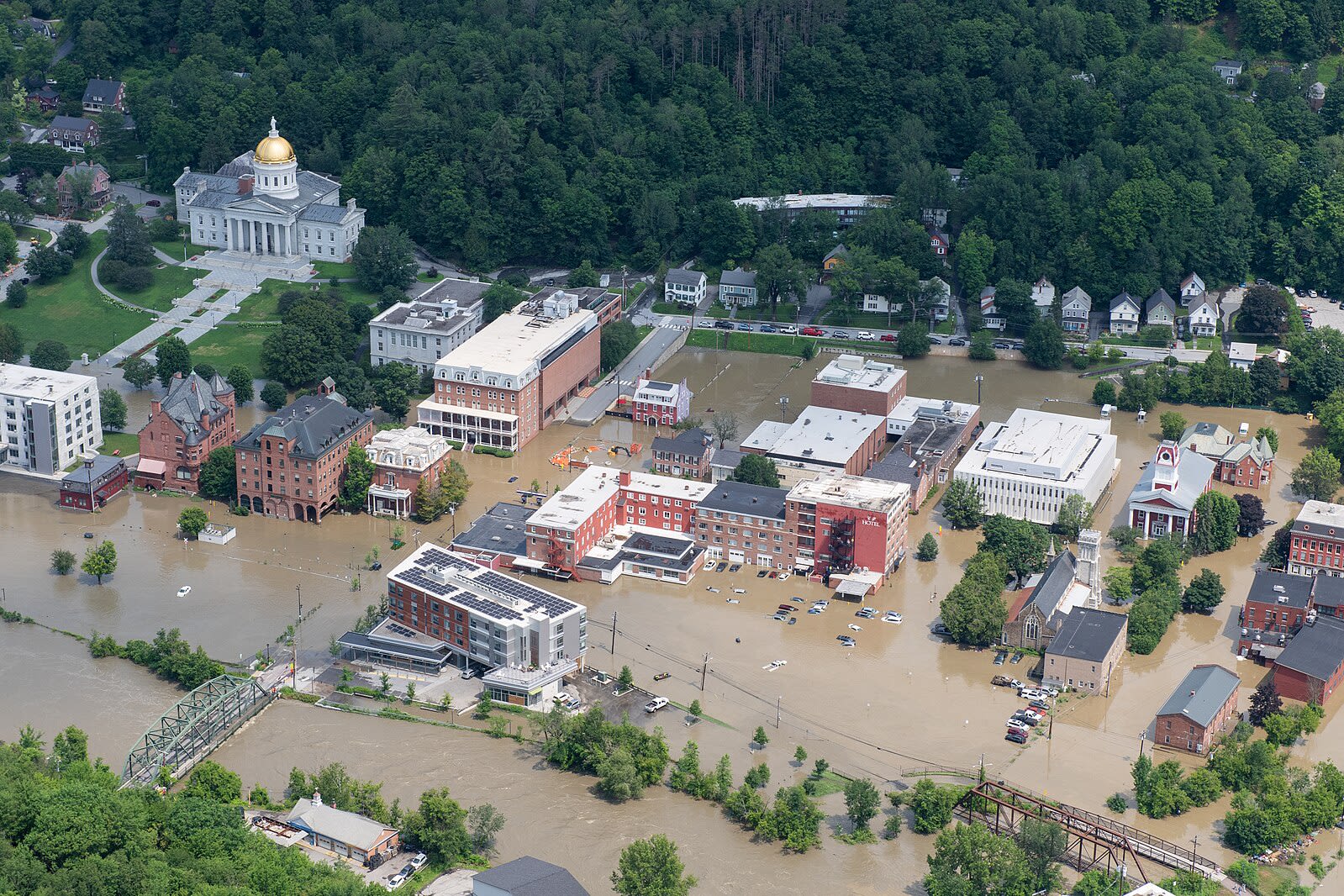
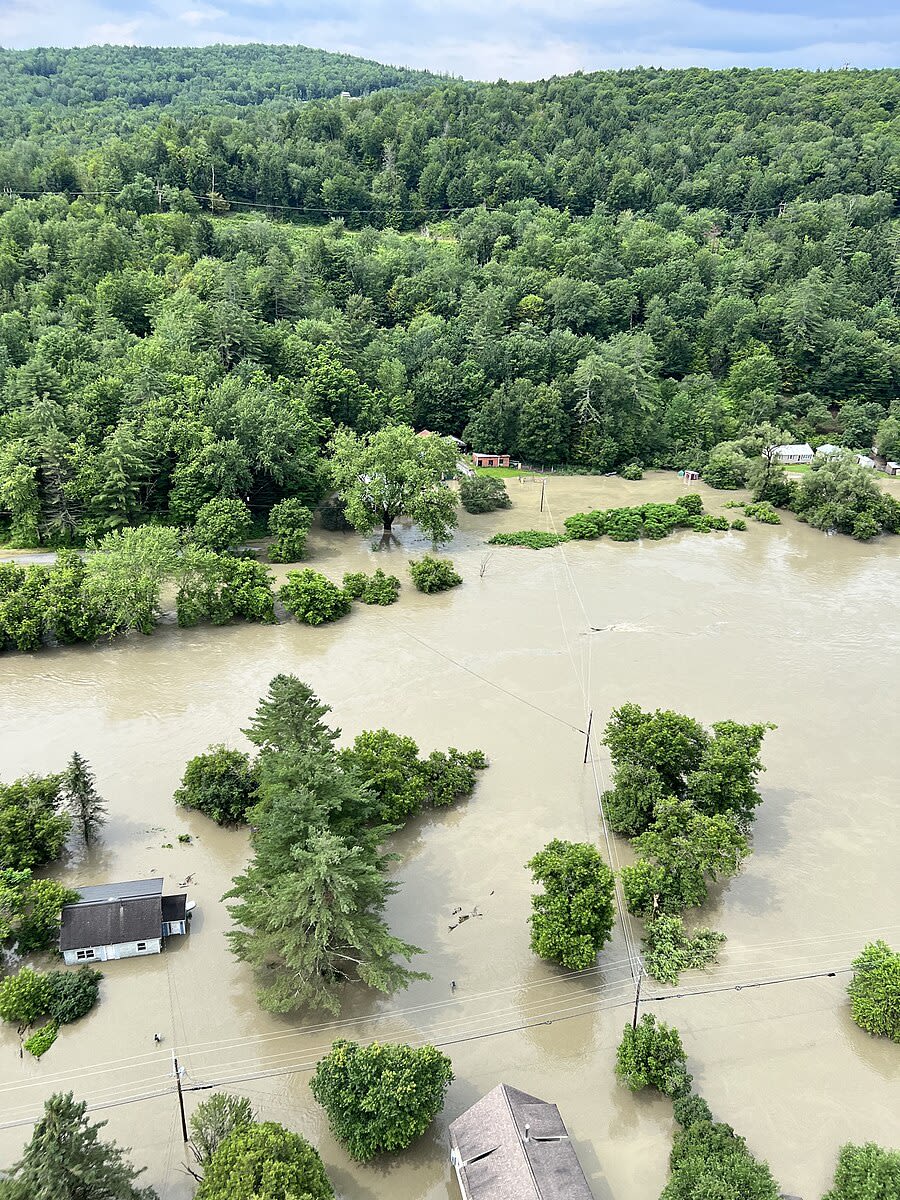

Ocean Health
Ripples of Our Greed.

Hurricanes
The unsettling vision of rapidly intensifying hurricanes is becoming more frequent in the Atlantic and Pacific, and the 2023 season proved this sickening reality.
The National Hurricane Center describes rapid intensification as “an increase in the maximum sustained winds of a tropical cyclone of at least 30 kt [knots] (35 mph) in a 24-h [hour] period.”
The most indicative of rapid growth is Hurricane Otis. Hurricane Otis transcended all expectations and experienced explosive intensification before making landfall as a catastrophic Category 5 hurricane just west of the popular resort city of Acapulco.

A National Hurricane Center bulletin posted before Hurricane Otis made landfall in Mexico. Photo courtesy of the National Hurricane Center and Wikimedia Commons.
A National Hurricane Center bulletin posted before Hurricane Otis made landfall in Mexico. Photo courtesy of the National Hurricane Center and Wikimedia Commons.
Several projections challenged Hurricane Otis’ potential to attain hurricane status. Instead, Otis strengthened 120 miles per hour in 24 hours, prompting the National Hurricane Center to denote the situation as a “nightmare scenario.”
Pan wonders whether Otis was a one-time event or a precursor to a new reality.
“Even the people in charge of [forecasting] the weather didn’t foresee that one happening. Do we see more of that?,” Pan, who also teaches Marine Science, said.
Otis toppled trees, destroyed high-rises, and severed communication with the city of a million, spurring a humanitarian crisis.
More so, without electricity, the heat was unbearable. Disease remained rife as locals waited for assistance from the Mexican government. Nicolás González Morales, a community leader, told The Guardian that resources arrived a week later and power was restored more than two weeks after the hurricane.
“In those first weeks, we had to sleep outside because of the heat, battling mosquitoes,” Morales said. You can see how much help we still need. There are lots of people with diarrhoea, fever, dengue.”
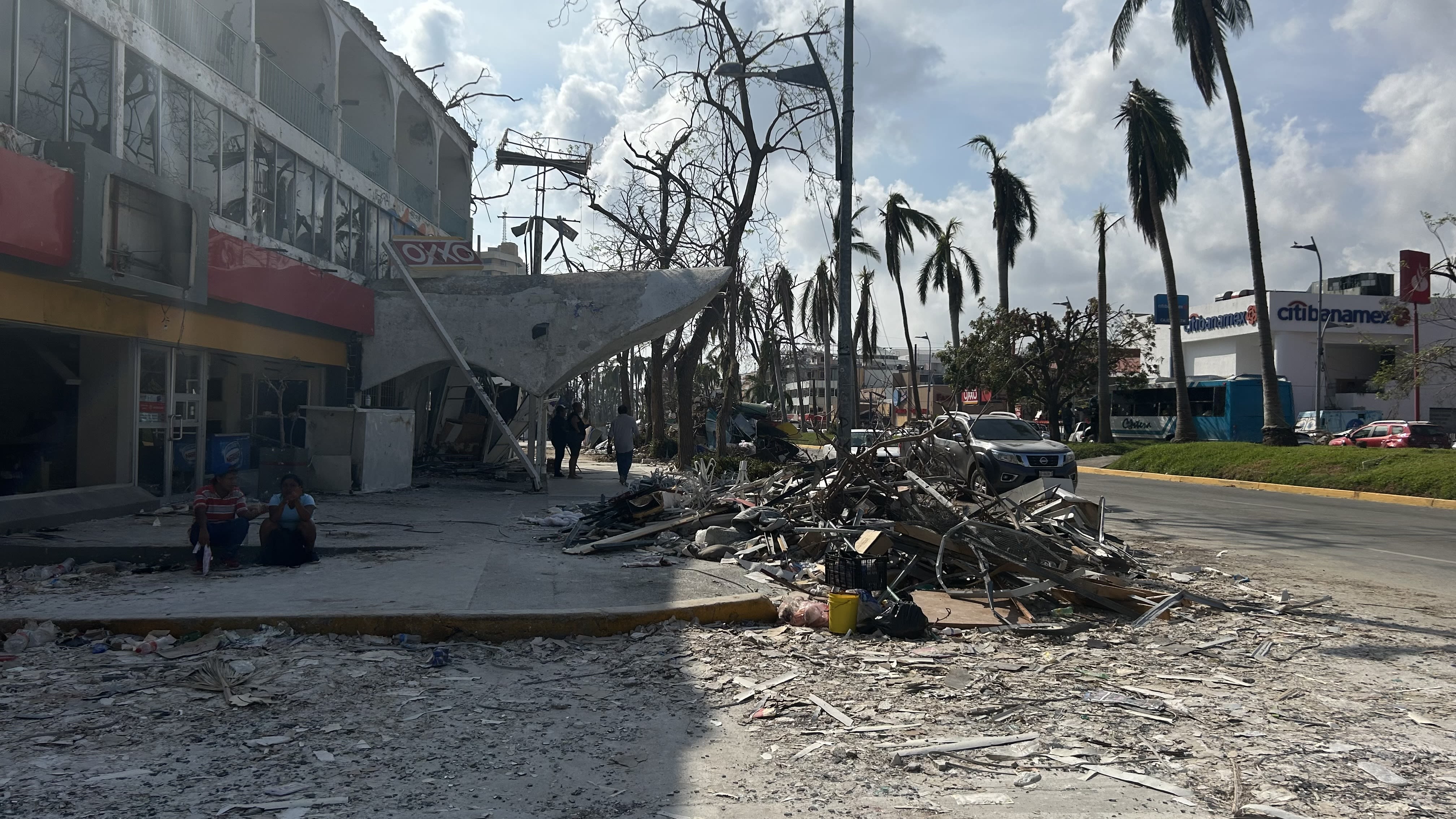
The devastation left behind after Hurricane Otis ripped through Acapulco. Photo courtesy of Wikimedia Commons.
The devastation left behind after Hurricane Otis ripped through Acapulco. Photo courtesy of Wikimedia Commons.
Illnesses thrived as water quality deteriorated, welcoming mosquitoes and water-borne malaises.
“More people are going to die from illness in the coming weeks and months than died during the hurricane,” Gabriel Hernández, the medical manager at Medical Impact, an NGO, said.
The Guardian shared that unwise policy choices may have contributed to the delay in action. In late 2018, emergency response responsibilities were shifted to the armed forces, despite their inability to act during disasters.
Mexican President Andrés Manuel López Obrador made the second political misstep: disbanding funds for disaster relief. López Obrador validated the decision, quoting corruption at the governmental level.
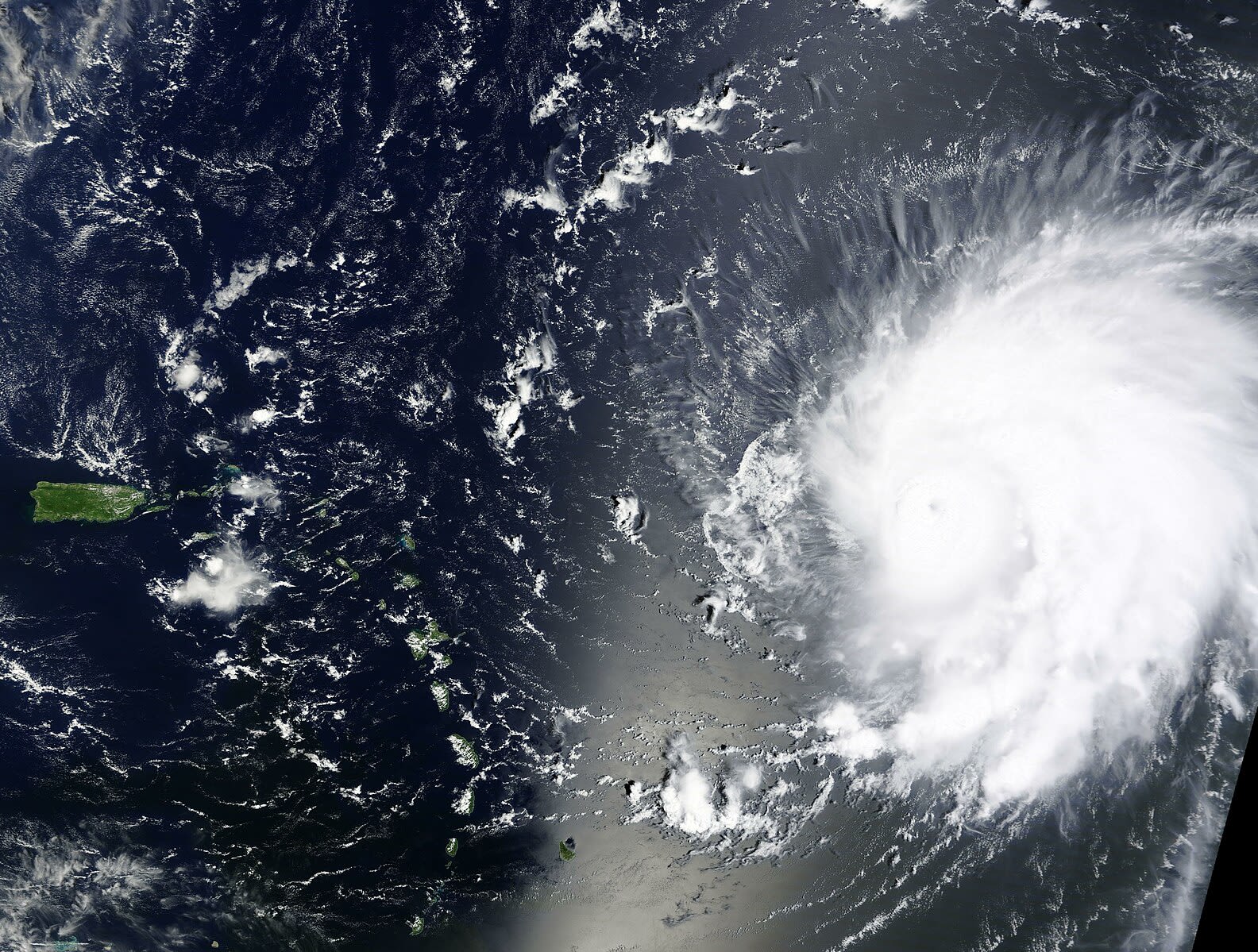
Hurricane Lee powers toward Puerto Rico after undergoing explosive intensification to reach a Category 5. Photo courtesy of NASA and Wikimedia Commons.
Hurricane Lee powers toward Puerto Rico after undergoing explosive intensification to reach a Category 5. Photo courtesy of NASA and Wikimedia Commons.
Otis was not the only storm to strengthen to a Category 5 this hurricane season. Along with Otis, Hurricane Jova in the Pacific and Hurricane Lee in the Atlantic, both reached the top echelon of the Saffir-Simpson scale.
Furthermore, many other 2023 cyclones achieved major hurricane (Category 3 or above) status.
On August 20, Hurricane Hilary, which peaked at Category 4, slammed into Baja California as a tropical storm and brought atypical floods to southern California. Ten days later, Hurricane Idalia, a dangerous Category 3 hurricane tore through Florida's Big Bend.
While there is little evidence for a connection between climate change and the frequency of hurricanes, the potency of a cyclone is associated with a warming ocean. An ideal temperature is 80°F, as the warmth provides fuel for the hurricane.
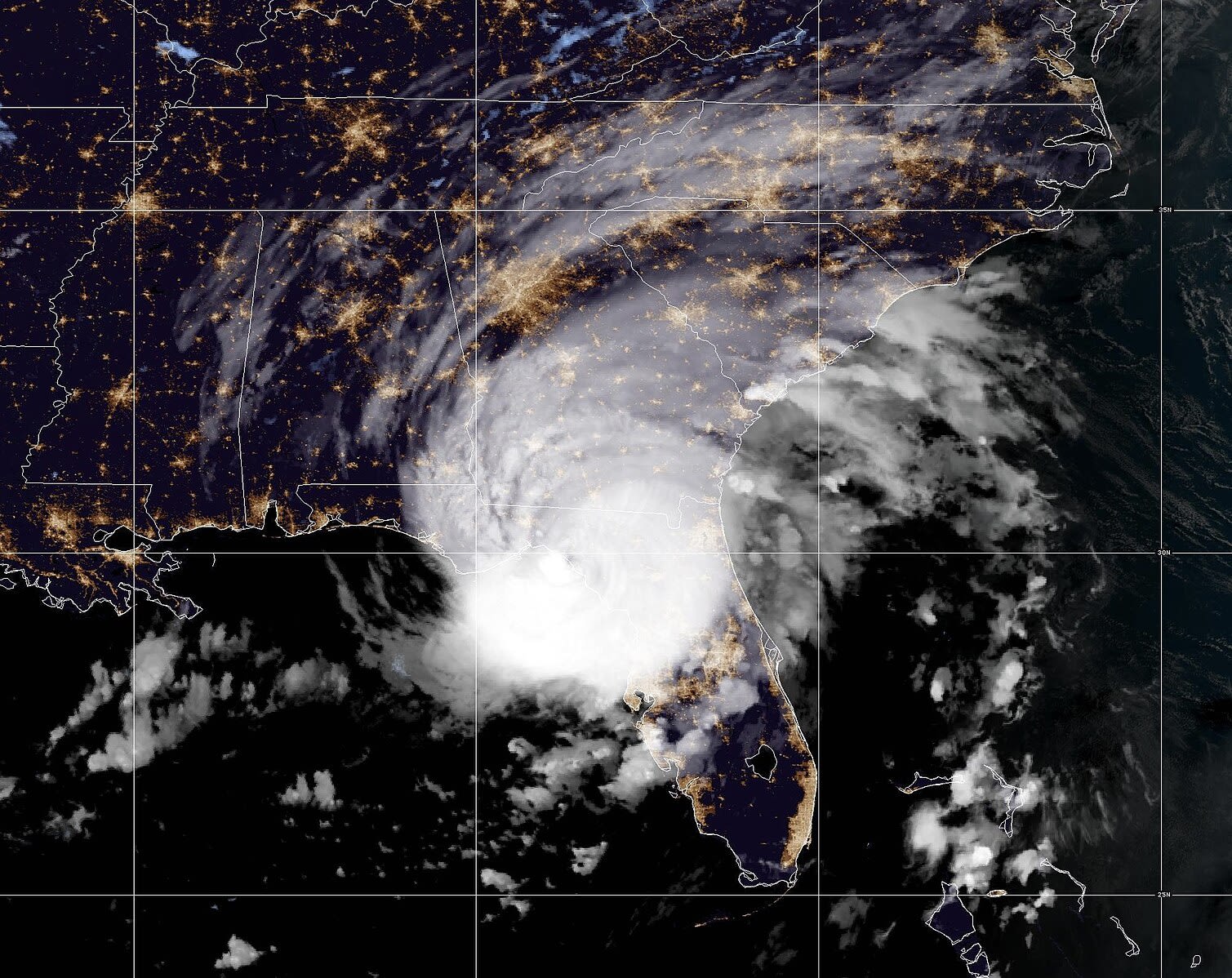
Hurricane Idalia makes landfall on the Big Bend region in Florida as a destructive Category 3 hurricane. Photo courtesy of NOAA/Wikimedia Commons.
Hurricane Idalia makes landfall on the Big Bend region in Florida as a destructive Category 3 hurricane. Photo courtesy of NOAA/Wikimedia Commons.
Ocean temperatures in the Gulf of Mexico as Idalia churned up the coastline of West Florida ranged from 87 to 89°F. Earlier in the summer, reports showed that ocean surface temperatures climbed to 101°F in Florida.
That’s what the temperature of a hot tub should be, not the ocean.
Ocean Currents
Warming sea temperatures don't only cause stronger storms.
Warmer ocean temperatures also contribute to ice melt, which can be particularly dangerous in Greenland.

An iceberg in Wolstenholme Bay that broke off the Greenland Ice Sheet, signifying the ice melt in the region. Photo courtesy of NASA and Wikimedia Commons.
An iceberg in Wolstenholme Bay that broke off the Greenland Ice Sheet, signifying the ice melt in the region. Photo courtesy of NASA and Wikimedia Commons.
Over the summer, researchers revealed that the Atlantic Meridional Overturning Current (AMOC) may be heading toward collapse, a major tipping point, as early as 2025. The same study says that it may disintegrate by 2060.
AMOC circulates water, carrying warm water up north and transporting cooler water to the equator.
Pan explained that the collapse of AMOC would bring consequences to marine life.
“The biggest thing is the movement of oxygen and nutrients. If you aren’t moving those around, you don’t have upwelling occurring,” Pan said. “Upwelling is really important to bring some of those deep-sea nutrients and gasses to the surface which then allows life to flourish, but if you don’t have upwelling, that won’t happen.”
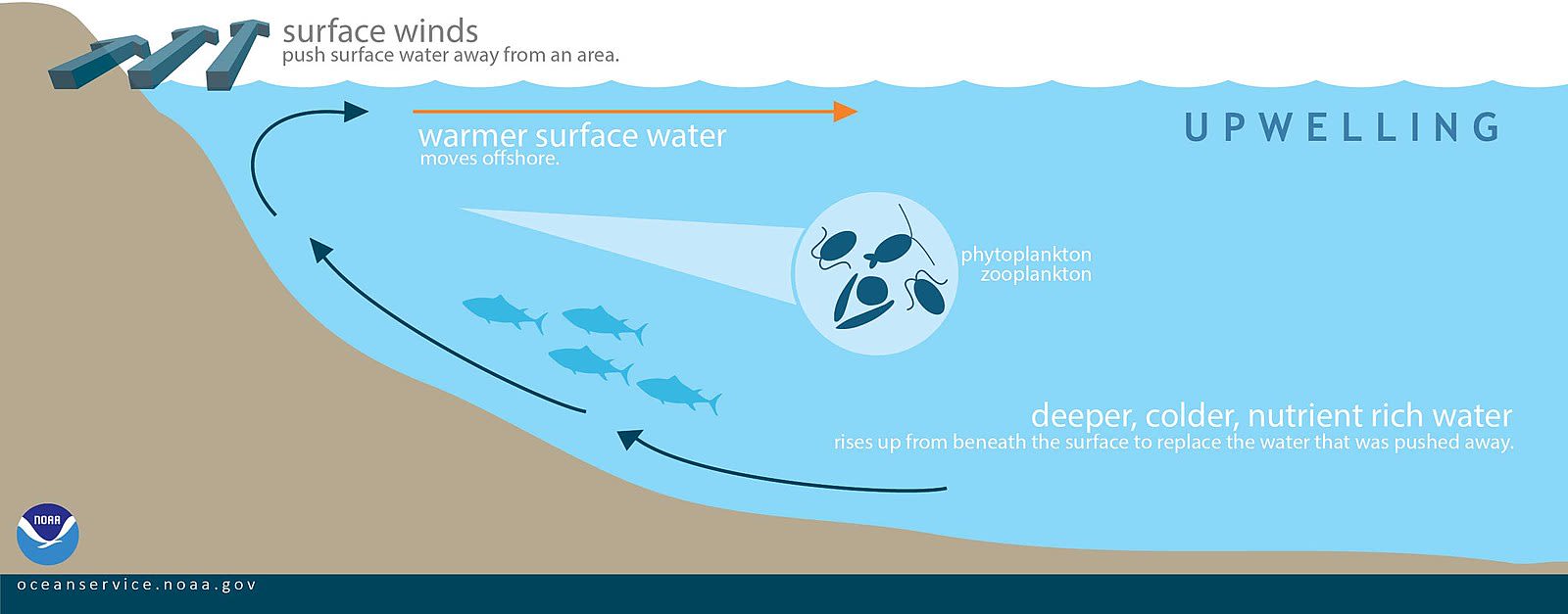
A NOAA graphic explaining how upwelling works. Photo courtesy of NOAA and Wikimedia Commons.
A NOAA graphic explaining how upwelling works. Photo courtesy of NOAA and Wikimedia Commons.
In fact, the first mass extinction, the Late Ordovician, which killed 85 percent of Earth’s species at the time, was caused in part by changes in upwelling.
If AMOC were to collapse, weather patterns would change too.
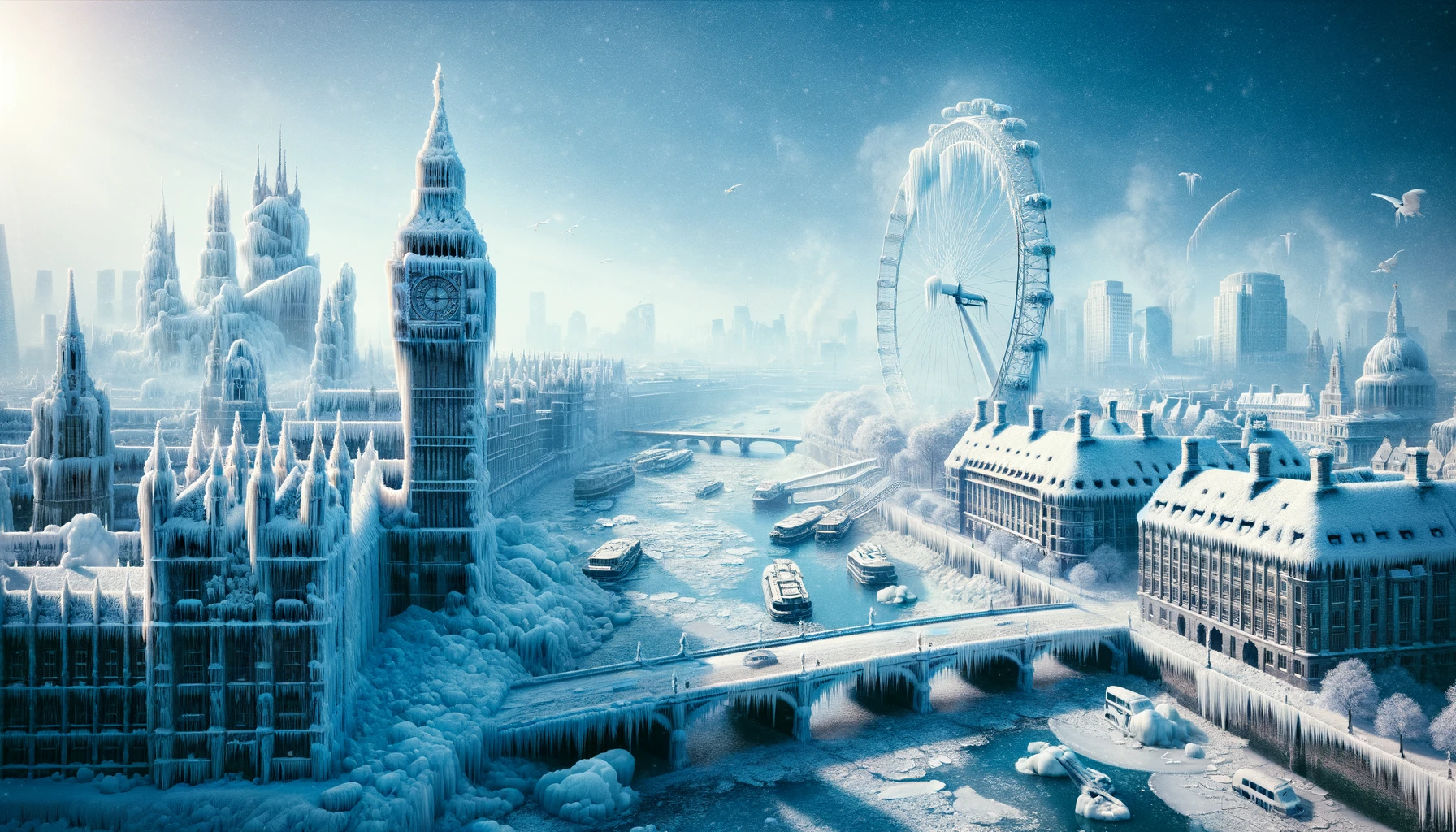
A representation of London in ice age conditions. Art created by DALL-E, an AI-art service.
A representation of London in ice age conditions. Art created by DALL-E, an AI-art service.
Without the current, the United Kingdom would lose its temperate conditions and would plunge Europe into an ice age along with sea level rise for the East Coast.
Economic Troubles
Furthermore, an increase in sea temperature will lead to economic challenges.
For example, take New England’s greatest delicacy—lobster.

A picture of a lobster. Photo courtesy of Wikimedia Commons.
A picture of a lobster. Photo courtesy of Wikimedia Commons.
Lobsters can only withstand ocean temperatures cooler than 68°F. As temperatures rise above 68°F, lobsters reach a “stress threshold.” Long-term exposure could imperil the lobster’s immune system and may lead to diseases and struggles to reproduce offspring.
Usually, lobsters would then migrate north to find cooler waters. With the Gulf of Maine warming three and a half times faster than the global average, lobsters may drift northward once more, causing Mainers to lose a main source of income and culture.
“This is more than a job–it’s a whole way of life. It’s all some people know how to do. I would love to pass it on, but I’m not sure what it’s going to look like in the future,” Krista Tripp, a lobster harvester said.
So why is the ocean seeing such high temperatures?
The ocean is an effective carbon sink, absorbing 93 percent of the heat produced by carbon emissions.
“With global warming, given the carbon dioxide we’ve pumped into the atmosphere since the Industrial Revolution hasn’t had the effect as rapidly as we thought, it would [be] because a huge amount of that carbon dioxide is absorbed by the oceans," Pan said.
The storage of carbon dioxide can also lead to some concerning changes in oceanic chemistry.
“And [it] makes places more acidic because carbon dioxide, when you mix it with water, forms carbonic acid, and therefore you get a change in pH in the ocean,” Pan said.
Acidification can spell trouble for shellfish. Shells of oysters, clams, and other shellfish use calcium carbonate to construct their shells. However, when the ocean is acidic, the shells may be delicate, enhancing the susceptibility to breakage.
Livelihoods and biodiversity both go up in ashes without shellfish.
Just in the Pacific Northwest, the shellfish industry inserts $270 million into the region’s economy. Shellfish play a massive role in water quality and the management of important nutrients.
Childhood Memories Float Away
The picturesque beaches dot the coastline of the island nation of Tuvalu, or at least they used to be there.
Now, according to Tuvaluan Penny Lotoala, the beach disappeared from erosion and the sea swept away the idyllic trees she remembers as a child.
“The land has been taken – lost,” Lotoala said in an interview with The Globe and Mail.
Tuvalu and its fellow Pacific island nations face extinction as sea levels in the Pacific continue to rise. Estimates say that 95 percent of Funafuti, the country’s capital, will be flooded during high tides by 2100. That is not liveable.
Art created by DALL-E, an AI-art service.
An Island Disappearing
Nyangai Island off the coast of Sierra Leone faces the same fate.
Like Lotoala, fisherman Kpana Charlie’s island is dramatically different from his childhood.
NPR reported that the beaches that were once pristine no longer exist and the thick forest dissipated. Charlie is concerned that the island may vanish in as little as two years.
“There's nowhere to go to the toilet. There's nowhere to be free. Whenever the water's high the place floods all over. It never used to happen like this,” Charlie said.
In 2012, a storm swept away 35 houses from the island.
"It was chaos," Charlie said. "Everyone was so afraid. The next morning, we all decided to leave. I told myself I couldn't stay here any longer."
As locals of Nyangai Island suffer from the constant flooding and eradication of their land, government officials refuse to act. The Sierra Leone Environmental Protection Agency defended its inaction, citing scarcity of resources.
“Nyangai is not a government priority at the moment,” the Environmental Protection Agency deputy director Paul Lamin said. "We have so many competing priorities in Sierra Leone and only scarce resources."
Art created by DALL-E, an AI-art service.
A Sinking Capital
Some countries have already prepared for the worst.
Indonesia plans to relocate its capital from the bustling metropolis of Jakarta to Nusantara, a jungle haven on the island of Borneo.
While Mexico City and Venice often share the spotlight for sinking cities, Jakarta is sinking the fastest. In 2017, The New York Times revealed that coastal neighborhoods of the city were sinking at a rate of 14 inches per year. Back then, 40 percent of Jakarta was below sea level.
Art created by DALL-E, an AI-art service.
Floods Invade Home
Even in Boston, we need to be concerned about sea level rise.
Currently, the ocean is increasing an inch per eight years near Boston, but forecasters show that it might take only 15 years to see another six inches of sea level rise compared to 35 years in the past.
Moreover, in 2000, Boston experienced six days of flooding during high tides. In 2019, that number jumped up one. However, by 2050, Boston may see 95 days of high-tide flooding.
“I think the biggest one we need to think about is sea level rise. If you look at the Boston Harbor walk, that area often floods during king tide,” Pan said. “So the fact when you get a big storm and the Aquarium T stop is flooded and can’t function is an issue.”
Art created by DALL-E, an AI-art service.
It doesn't have to be this way. We need to make a change .
A Step Forward
Luckily, the time is ripe to advance solutions to the climate crisis. Especially now, as COP28, the largest climate conference, opened Thursday in Dubai. World leaders and diplomats must use this convention as an impetus toward a climate-resilient future.
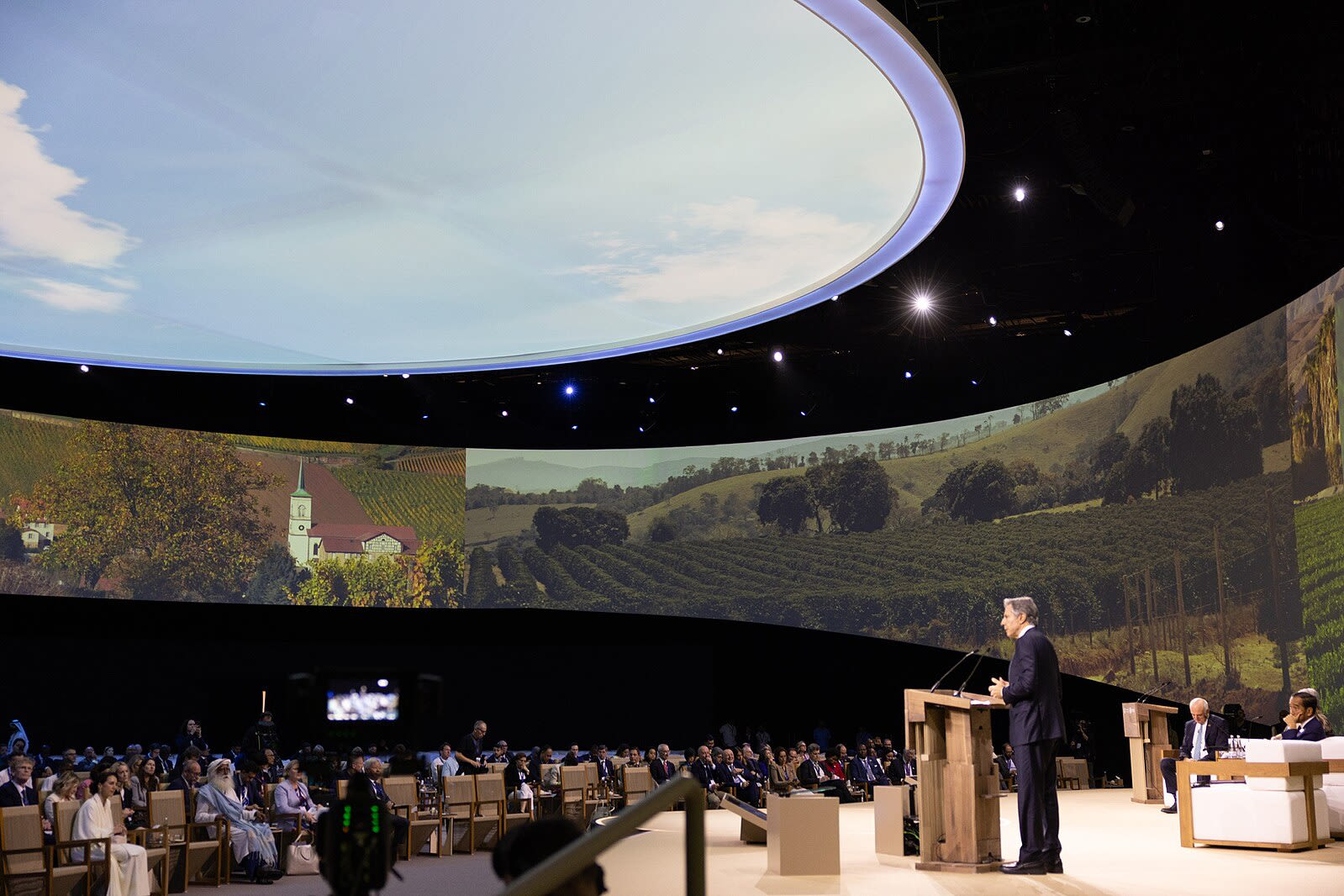
U.S. Secretary of State Atony Blinken discusses the transformation of food systems at COP28 in Dubai. Photo courtesy of the Department of State and Wikimedia Commons.
U.S. Secretary of State Atony Blinken discusses the transformation of food systems at COP28 in Dubai. Photo courtesy of the Department of State and Wikimedia Commons.
At conferences like COP28, leaders need to stress global cooperation and honest conversations that embrace innovation and youth, not outcast them. Both groups are valuable in the fight to save our planet.
And while it may seem doom-and-gloom, fear and grief should be an agent of change, not a deterrent.
And while it may seem doom-and-gloom, fear and grief should be an agent of change, not a deterrent.
But most of all, we need hope in the indomitable human spirit.
Since COP28 started, we have already witnessed progress.
Despite choosing to skip COP28, President Joe Biden revealed a regulation today in hopes to axe methane emissions by 80 percent through 2038 from the oil and gas sector.
Climate Victories
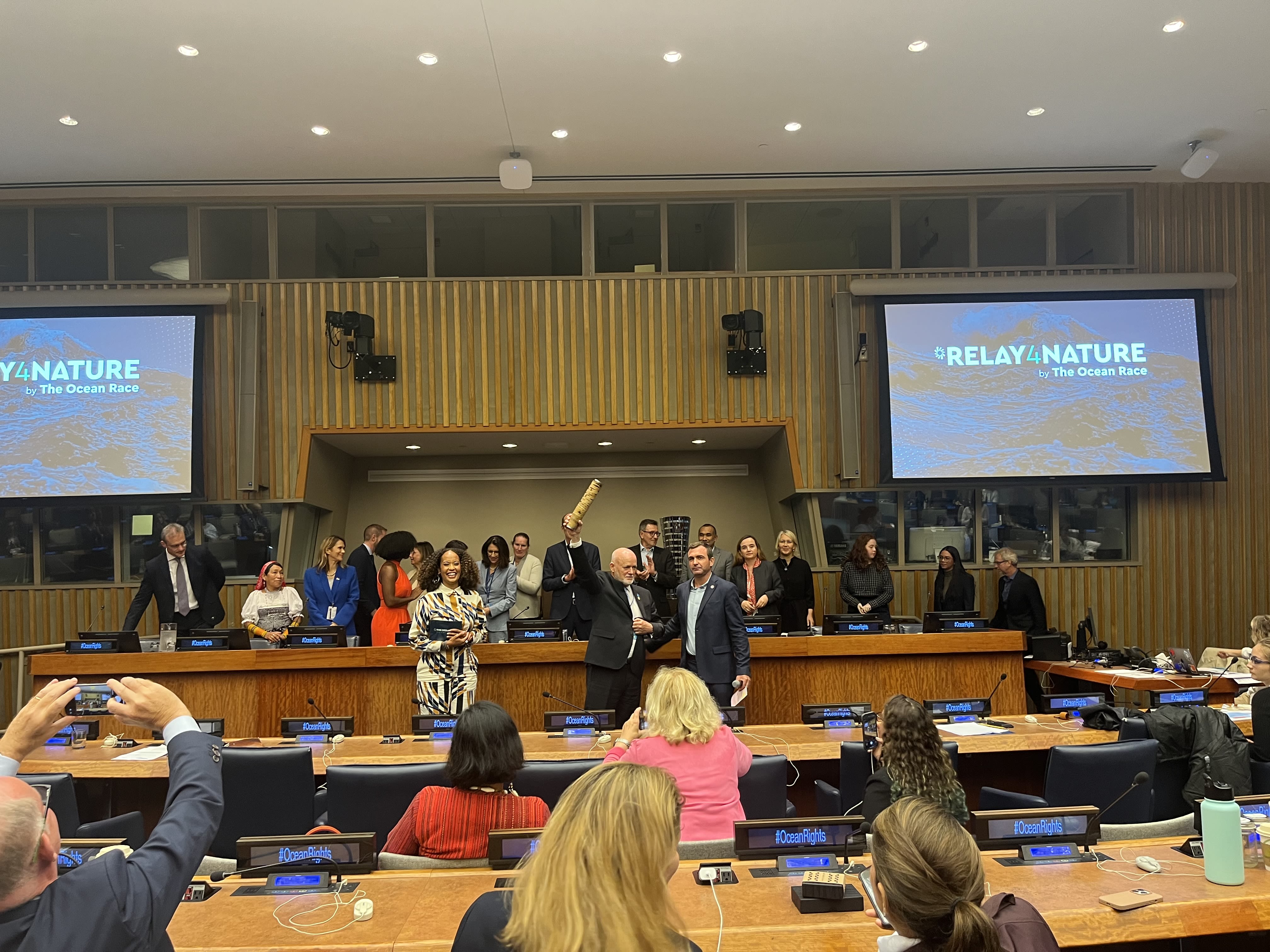
11th Hour Racing Skipper Charlie Enright and United Nations Secretary-General's Special Envoy to the Ocean Peter Thomson participate in the Relay4Nature organized by The Ocean Race at The Ocean Summit in September at the United Nations Headquarters. Photo courtesy of Evan Michaeli.
11th Hour Racing Skipper Charlie Enright and United Nations Secretary-General's Special Envoy to the Ocean Peter Thomson participate in the Relay4Nature organized by The Ocean Race at The Ocean Summit in September at the United Nations Headquarters. Photo courtesy of Evan Michaeli.
Universal Declaration of Ocean Rights
In September during the United Nations General Assembly, The Ocean Race unveiled the Universal Declaration of Ocean Rights, a comprehensive document with its goal of preserving the ocean. Articles of the treaty call for respect for our oceans and practice transparency in decisions regarding the ocean. At the summit, several countries pledged support for the treaty, including Panama, Sweden, and Cabo Verde. Before the unveiling, more than 32,000 people globally petitioned for ocean rights.
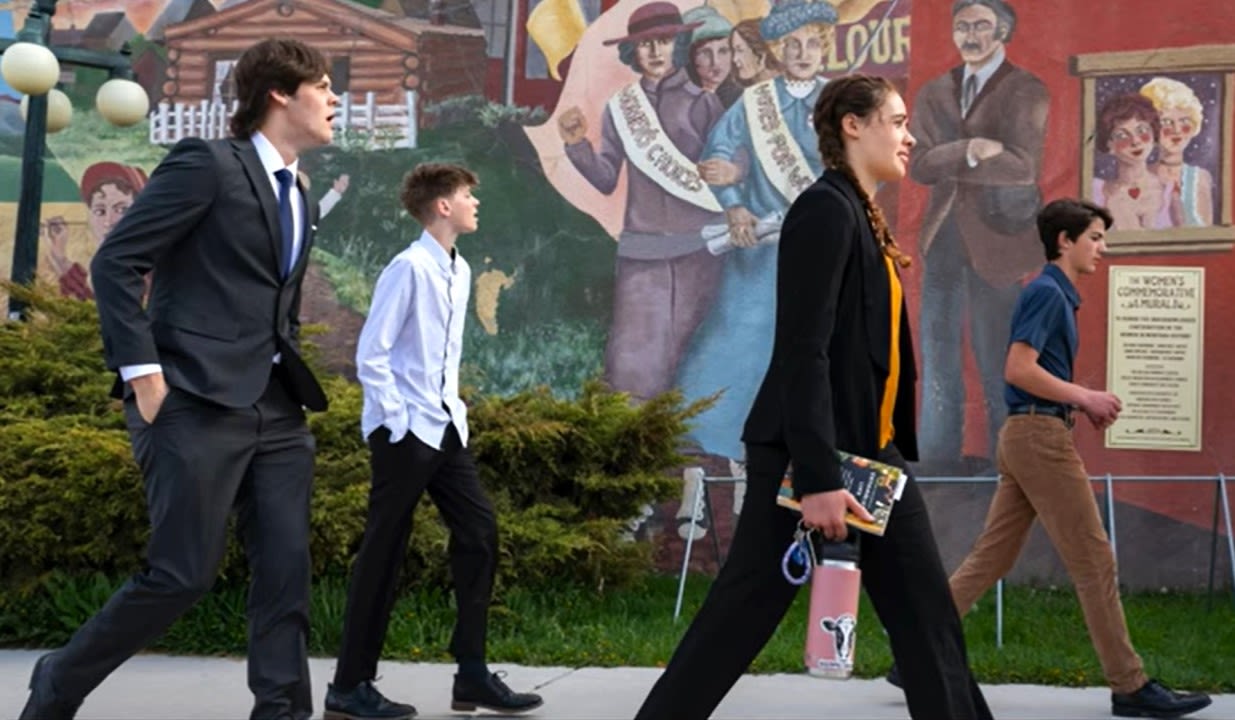
Youth activists sued the state of Montana for the violations of the state's constitution promising citizens a clean environment. Photo courtesy of Our Children's Trust and Wikimedia Commons.
Youth activists sued the state of Montana for the violations of the state's constitution promising citizens a clean environment. Photo courtesy of Our Children's Trust and Wikimedia Commons.
Landmark Legal Victory
In a monumental victory for climate activists, a Montana judge ruled in favor of youth environmentalists who sued the state for its climate policy. District Court Judge Kathy Seeley decided the state's procedure for pipeline requests was unconstitutional per the Montana state constitution. Montana's constitution explicitly ensures citizens a right to a clean environment. The ruling paves the way for activists, especially youth, to challenge unjust policies ruining our privilege to a safe environment. Many activists have since proceeded the litigation route, including in Hawaii for the Maui fire incident.

An Adidas store in San Francisco. Adidas announced they are selling a new shoe, the UltraBoost DNA Loop. The shoe is hailed to be one that no one owns, as Adidas will always remake the shoe. Photo courtesy of Wikimedia Commons.
An Adidas store in San Francisco. Adidas announced they are selling a new shoe, the UltraBoost DNA Loop. The shoe is hailed to be one that no one owns, as Adidas will always remake the shoe. Photo courtesy of Wikimedia Commons.
Adidas UltraBoost DNA Loop
In 2020, Adidas released the UltraBoost DNA Loop—footwear no one owns. Adidas says that once the shoes complete a lifecycle, the customer will return the shoes back to Adidas, who will transform them into a new pair of shoes. This approach ushers in a new direction in sustainable fashion and economics, and one that resembles a circle. A circular economy emphasizes recycling and reusing materials and uses landfills as a last resort.
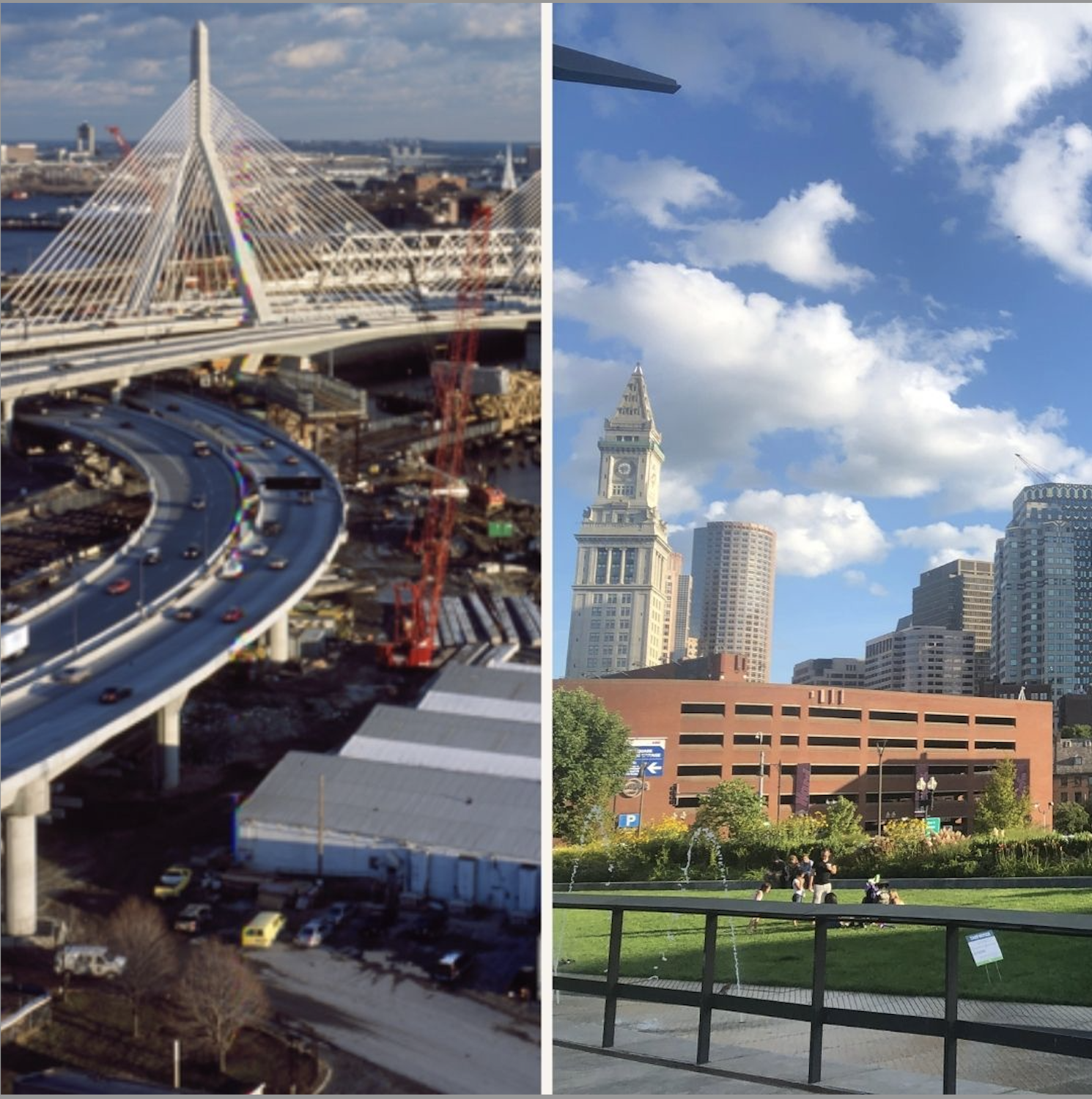
A before-and-after showing Boston's Big Dig project from the 1990s to the Rose Kennedy Greenway in 2020. The shift brought more green space to the city of Boston. Photo on the left courtesy of Carol M. Highsmith and Wikimedia Commons. Photo on the right courtesy of Evan Michaeli. Graphic created on Canva.
A before-and-after showing Boston's Big Dig project from the 1990s to the Rose Kennedy Greenway in 2020. The shift brought more green space to the city of Boston. Photo on the left courtesy of Carol M. Highsmith and Wikimedia Commons. Photo on the right courtesy of Evan Michaeli. Graphic created on Canva.
Sustainable Cities for the Future
Bosco Verticale, a modern building in Milan, is a literal green giant. Offering three hectares of forest upright, the building soaks in 30 tons of carbon dioxide a year. Moreover, the plants regulate pollution—both noise and air—and create habitats for animals. Following the green trend, Boston stopped the devastating highway project, the Big Dig in 2007 and replaced the land with a series of parks, the Rose Kennedy Greenway. Moreover, Navier, co-founded by Sampriti Bhattacharyya, provides a seamless travel experience across cities with waterways. Rather than waiting in traffic to cross Zakim Bridge, the invention allows people to automatically call for an electric-powered boat. The company says that passengers can get from Redwood City to downtown San Francisco in 20 minutes, greatly improving the time due to traffic.
While policy and innovation are needed to combat carbon emissions and other environmental issues, we can take small actions to help the fight for a better future.
Hand holding a plant that is growing. Purchased on BigStock.
Hand holding a plant that is growing. Purchased on BigStock.
Take it from Pan.
- Compost and don't waste food: “That food, if it is landfilled, decomposes and releases methane. Methane is the most powerful greenhouse gas there is," Pan said. “One of the easiest things to do at home is eat all your food or compost it.”
- Watch what you wear: “Fast fashion has one of the biggest impacts on global warming because you are not only using greenhouse gasses to grow cotton or petroleum products to do the nylon, you wear it shortly, you get rid of it, and it decomposes and adds to the global climate.”
- Skip single-use plastics: “If you are going to buy something to drink, buy an aluminum can over a plastic bottle because an aluminum can [may] be recycled over and over again and they are much more energy-efficient than buying a plastic bottle.”
I agree with Pan. Even though each of these actions is small, they add up—especially if all of us on Earth follow suit.
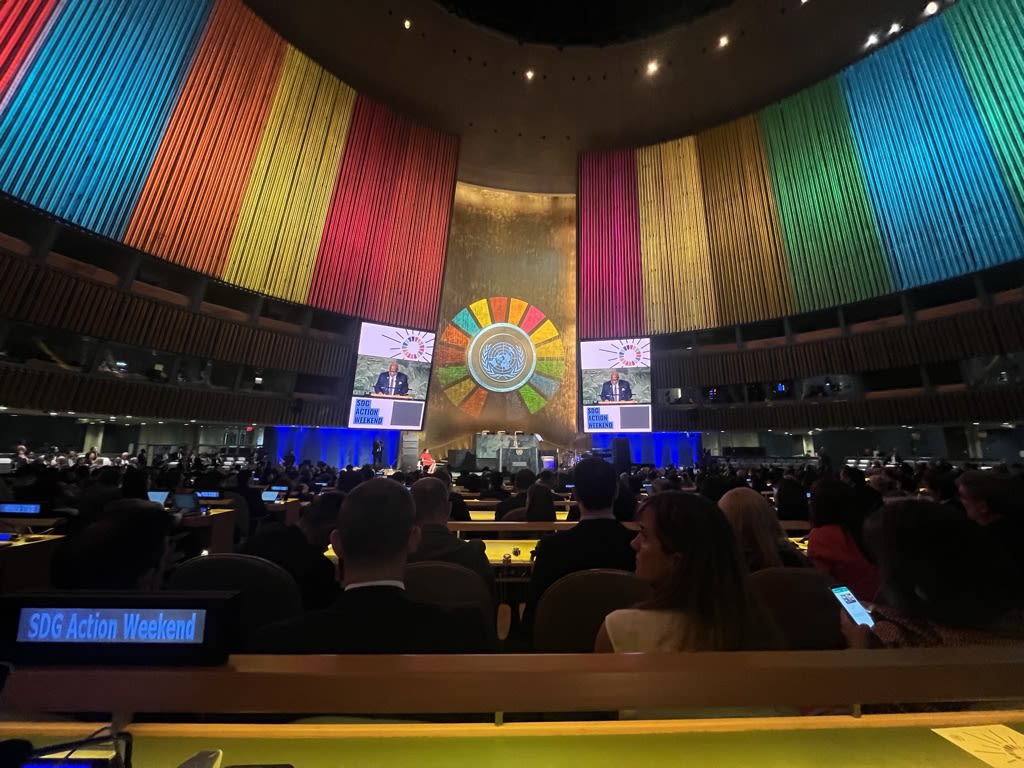
President of the 78th General Assembly Dennis Francis speaks to the crowd at the SDG Action Weekend ahead of the SDG Summit. Photo courtesy of Evan Michaeli.
President of the 78th General Assembly Dennis Francis speaks to the crowd at the SDG Action Weekend ahead of the SDG Summit. Photo courtesy of Evan Michaeli.
Reflecting back on my experience at the SDG Action Weekend, I have a glimmer of hope. It is possible to win the race against defeat. It is possible to flip the script. It is possible to make the change.
As Nelson Mandela once said, “It always seems impossible until it's done.”

